When visiting Crete in May 2022, my next destination was the archaeological site of Gortyn (in some places mentioned as Gortys). Here is again the map that shows all the places I visited during this journey:
As for Gortyn, once the visitor starts with the sightseeing of the main section of the site, they first come across the Basilica of St. Titus from the back side.
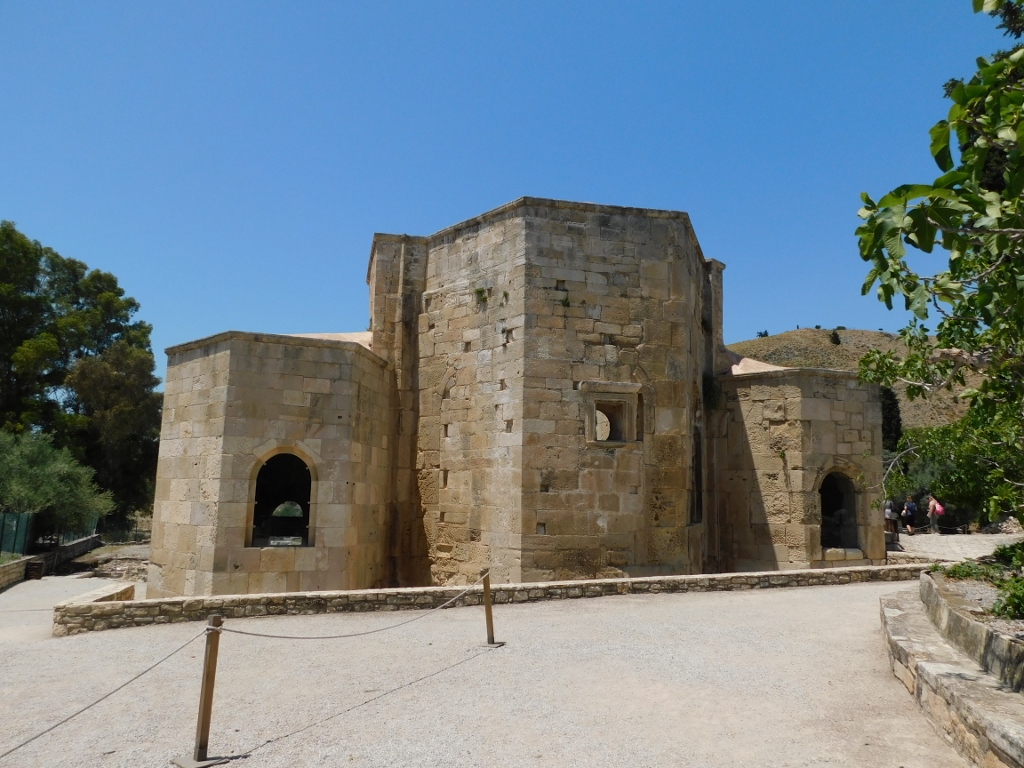 Basilica of St. Titus
Basilica of St. Titus
Back in the day, Gortyn used to be the capital of a Roman province and the seat of the first Christian bishop on Crete, St. Titus. However, the research has shown that there was a settlement here already from the Late Neolithic period (7000 BCE) and certainly until the period of the Minoan civilisation and later. For instance, a temple within the citadel was built in the 7th century BCE.
It was precisely the Gortynians who destroyed Phaistos in 150 BCE, so that it never again appeared on the historical scene (until the end of the 19th century and in the shape of ruins). With its position around the middle and on the north side of the Messara Plain, Gortyn certainly had the possibilities to dominate this part of Crete in the absence of any serious competition.
The Romans came here in 67 BCE and established a capital of a province that included both Crete and parts of North Africa, while increased construction of various buildings started during the 2nd century CE.
Meanwhile, there was intense proliferation of Christianity here and according to the legend, a disciple of St. Paul the Apostle, (later Saint) Titus came right here in the 1st century CE in order to spread the faith. He was appointed the bishop of Crete and over time was canonised and declared the patron saint of the entire island. St. Titus passed away in Gortyn.
The Christians were, however, persecuted under the Romans, especially during the reign of Emperor Decius when the first martyrs, the Holy Ten, perished here, which I will say a little more about later on.
But, after the recognition of Christianity, Gortyn became the seat of the bishopric covering all of Crete, which was then followed by an increased building of sanctuaries.
The development of the city continued also during the early Byzantine period, but its decline came soon after the Arab invasion in the 9th century when the site gradually became uninhabited.
The ruins can be seen today on both sides of the main road leading in the east-west direction along the northern border of the Messara Plain. The main part of the ruins is on the north side of the road, where the visitor buys the ticket, while the ruins on the south side of the road are hidden by an olive grove and in the absence of any signs, it was very difficult to locate them.
So, I started with the sightseeing of the main section of the ruins and there, as I’ve said, I first came across the Basilica of St. Titus.
 Basilica of St. Titus
Basilica of St. Titus
It is believed that this edifice dates back to the 7th century CE.
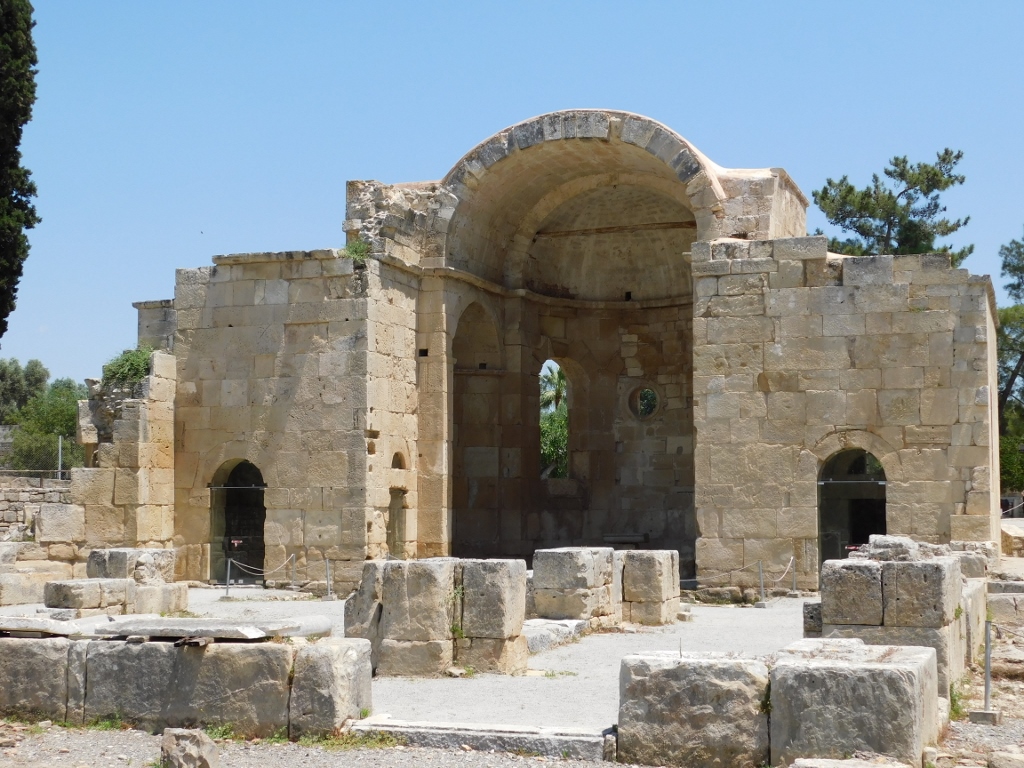 Basilica of St. Titus
Basilica of St. Titus
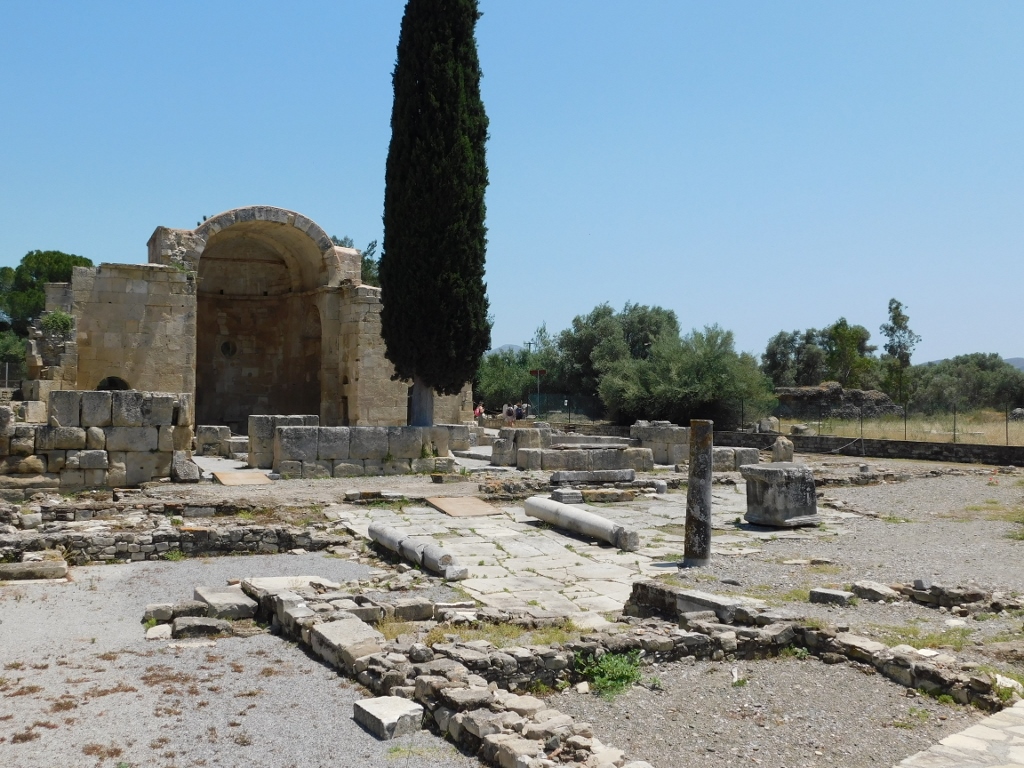 Basilica of St. Titus
Basilica of St. Titus
North of the basilica, there used to be an agora and today there are numerous olive trees that the visitor walks by in order to get to the second important building within this part of the site.
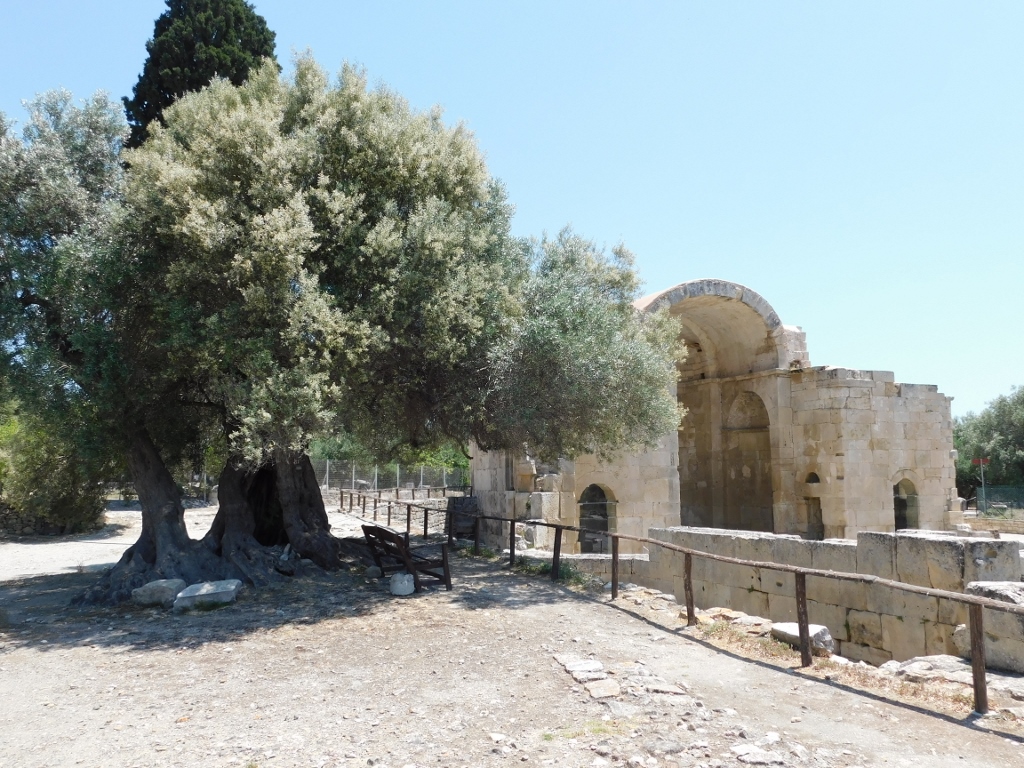 Basilica of St. Titus and a part of the former agora
Basilica of St. Titus and a part of the former agora
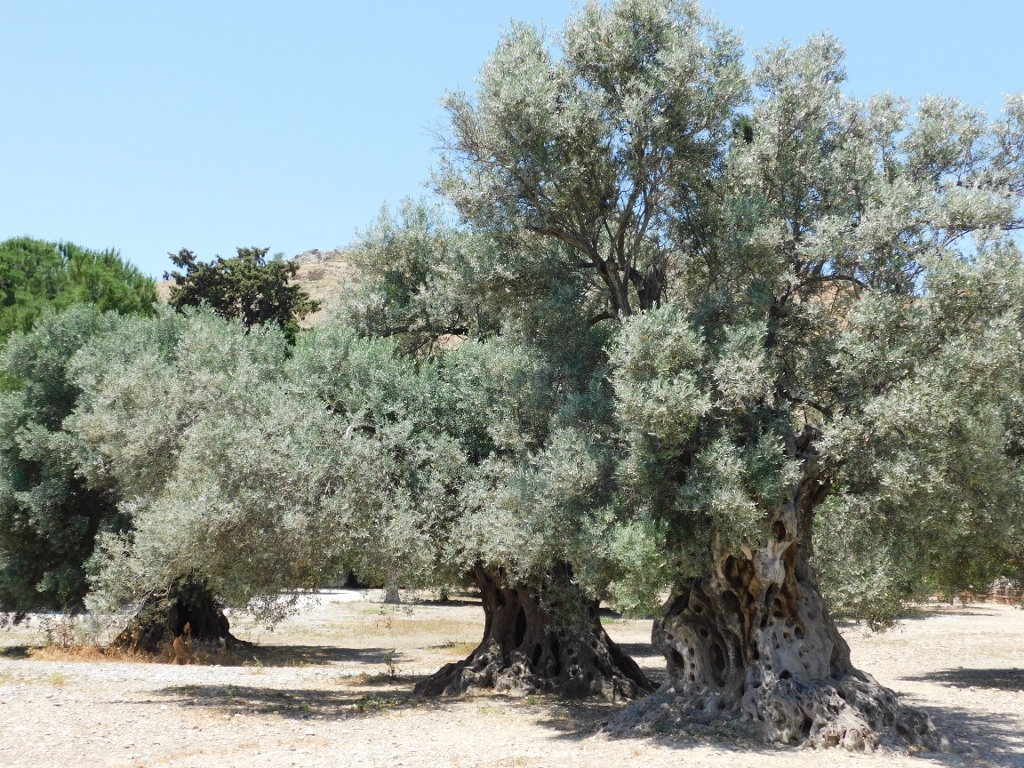 Olive trees where there used to be the agora
Olive trees where there used to be the agora
An informal trail that I followed walking between the olive trees leads to a good place from where there is a fine view at the north part of the site. An Odeon is in the foreground, while in the background, on the slope of the hill, there are remains of the North Theatre, with remains of the Acropolis on the very top of the elevation.
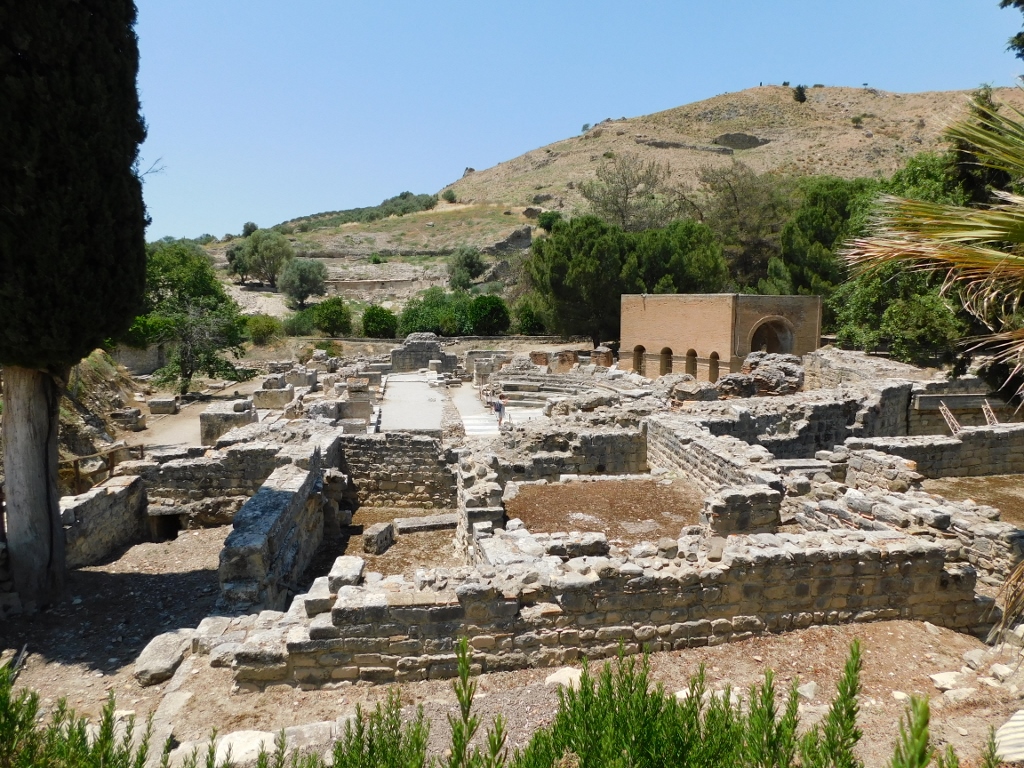 North part of the site of Gortyn
North part of the site of Gortyn
Let me say right away that I had no intention of walking up to the Acropolis. As an “official” excuse for this given to myself, I said I did not have the appropriate footwear, while the truth was that I was just too lazy. But, I don’t have any remorse whatsoever. As for the North Theatre, I just took zoomed-in photos of it using my camera.
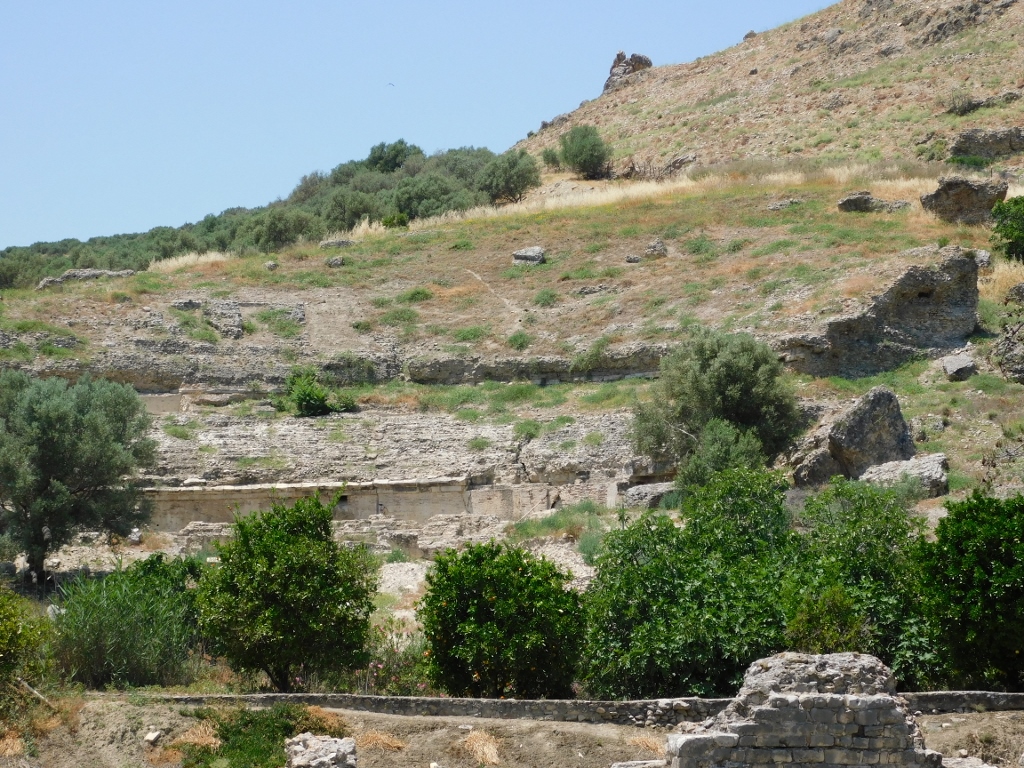 North Theatre
North Theatre
Still, even the walk around the flat terrain was very interesting nonetheless and a myriad of surviving parts of an antiquity settlement can be seen around.
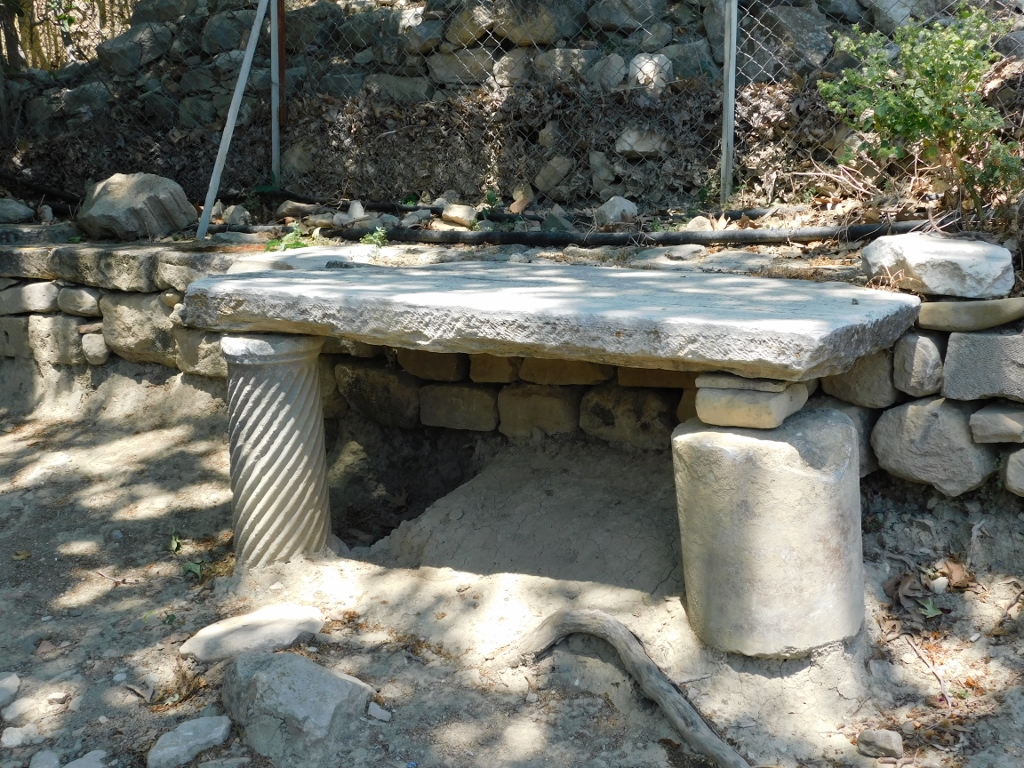 Archaeological site of Gortyn, a detail
Archaeological site of Gortyn, a detail
But, the significance of Gortyn is not linked only to the Romans and Christians. This place is exceptionally important for entire Crete and its culture and civilisation, and in extension for Ancient Greece, and consequently for entire Europe. Why?
Well, I have already mentioned that back in the day, Zeus, disguised as a bull, abducted Europa and transferred her to Crete; first to the beach in Matala and then, in the form of an eagle, right here, to Gortyn. And it was only here that the two of them had sex. The result: King Minos and other children. Today, the exact place where, according to the legend, all of this happened is marked by a plane tree.
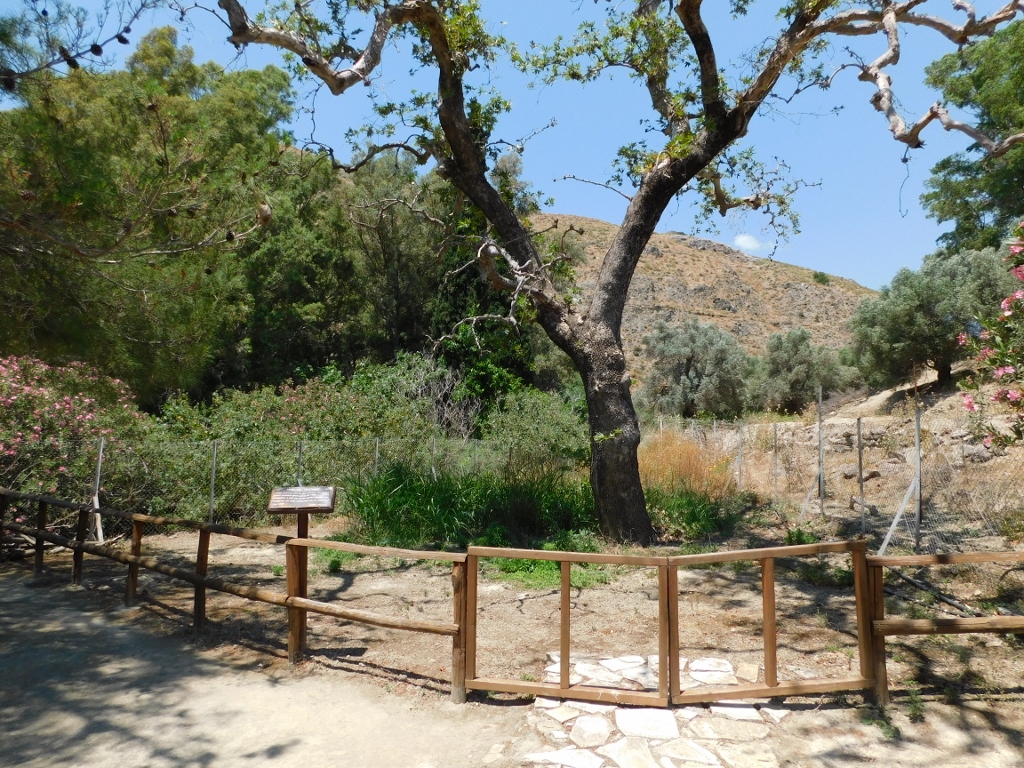 Archaeological site of Gortyn, the plane tree and the spot where Zeus and Europa first made love
Archaeological site of Gortyn, the plane tree and the spot where Zeus and Europa first made love
As for the Roman remains, which was why I came here in the first place, now I approached the Odeon from the back side and then I ventured among its sections.
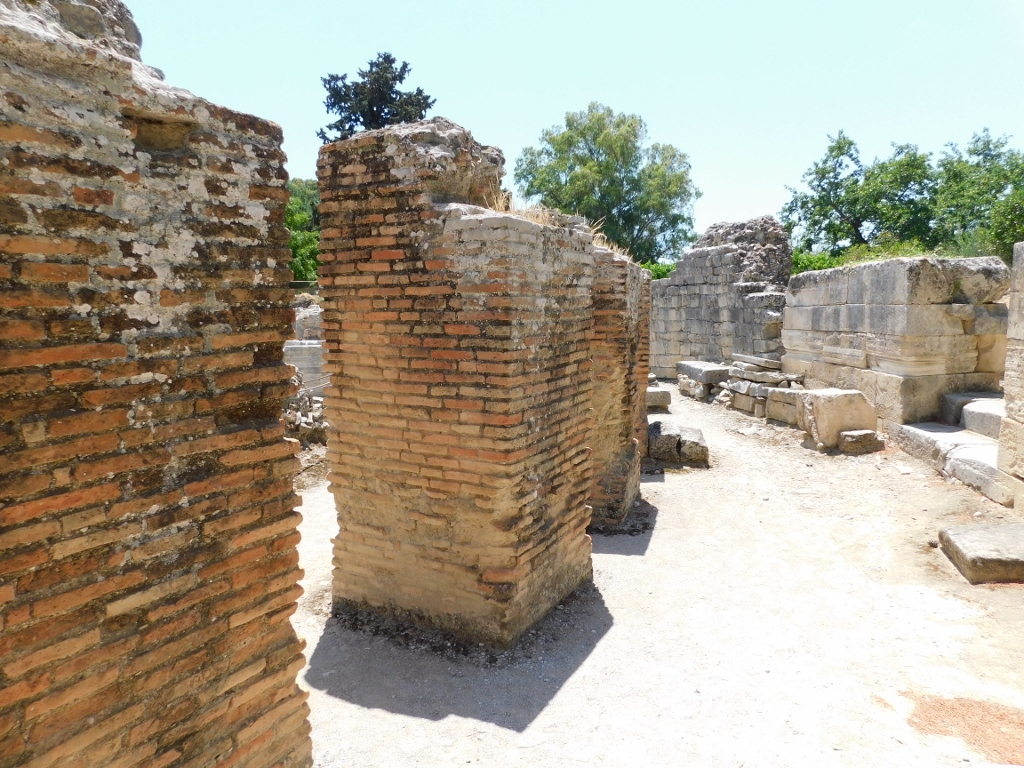 Gortyn’s Odeon, a detail
Gortyn’s Odeon, a detail
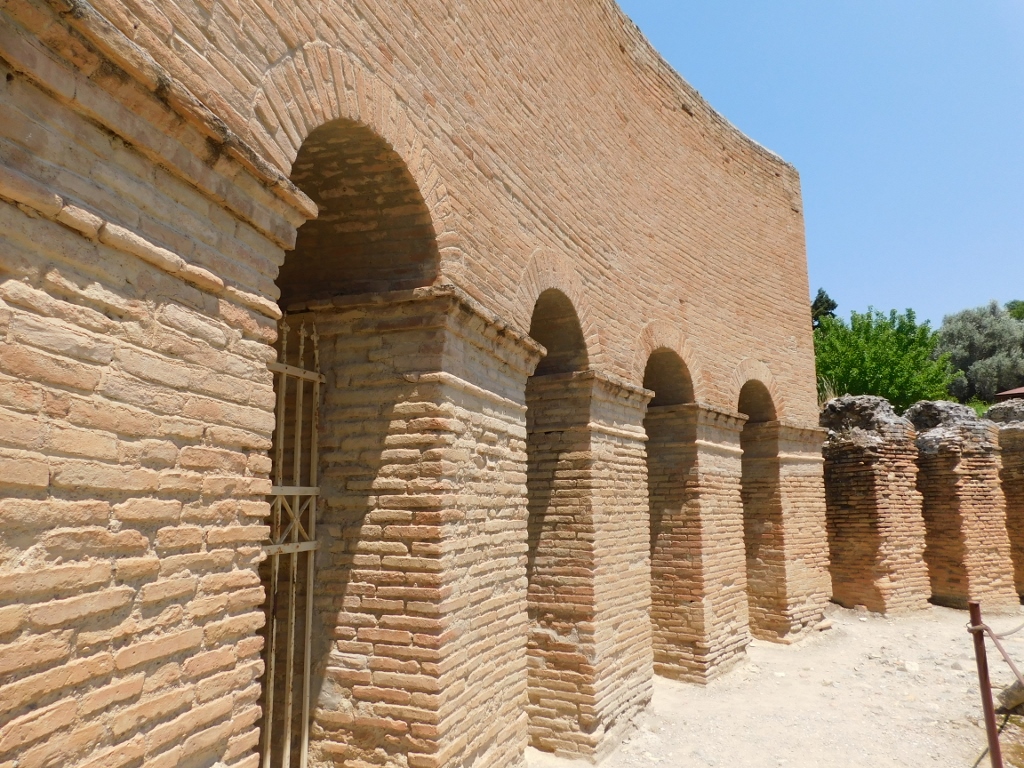 Gortyn’s Odeon, a detail
Gortyn’s Odeon, a detail
Walking amount the remains of the Odeon, I also came to its front side.
 Gortyn’s Odeon
Gortyn’s Odeon
This is a small theatre built in the 2nd century CE that has recently been restored.
By the way, within the restored structure made of bricks that can be seen in the middle of the photo above, within a hallway that exists there, on the stone blocks used in the construction of a wall it is possible to see inscriptions that constitute the Gortyn Code. I did not deal with this at all, opting rather to walk on within the Odeon and around it.
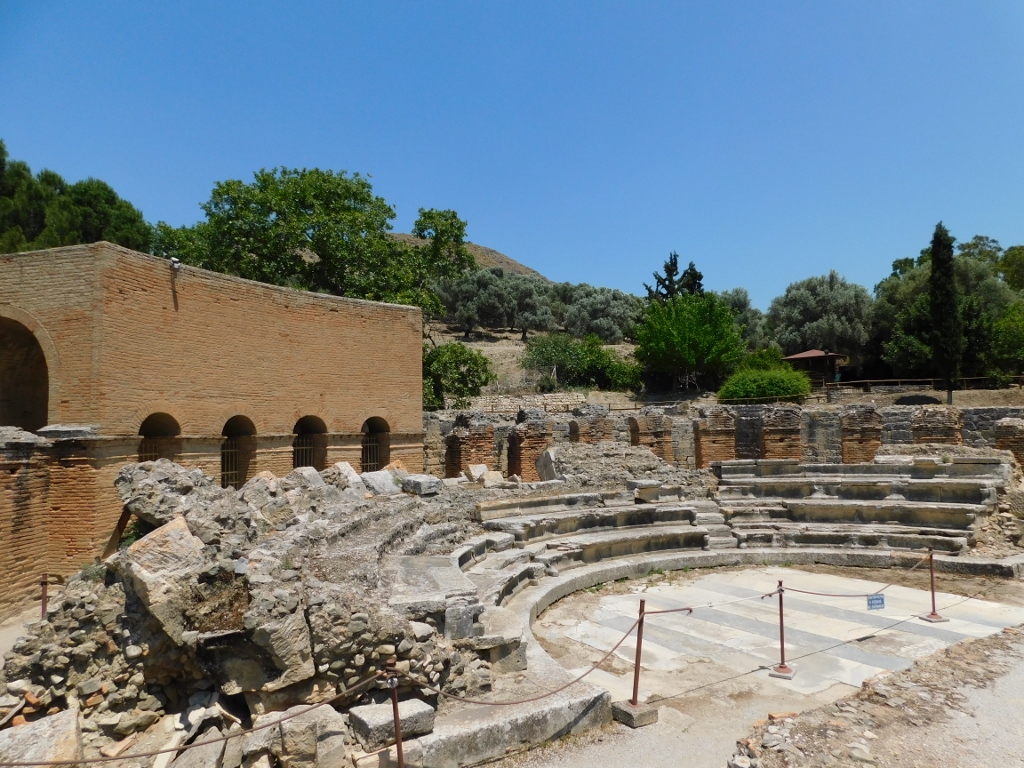 Gortyn’s Odeon
Gortyn’s Odeon
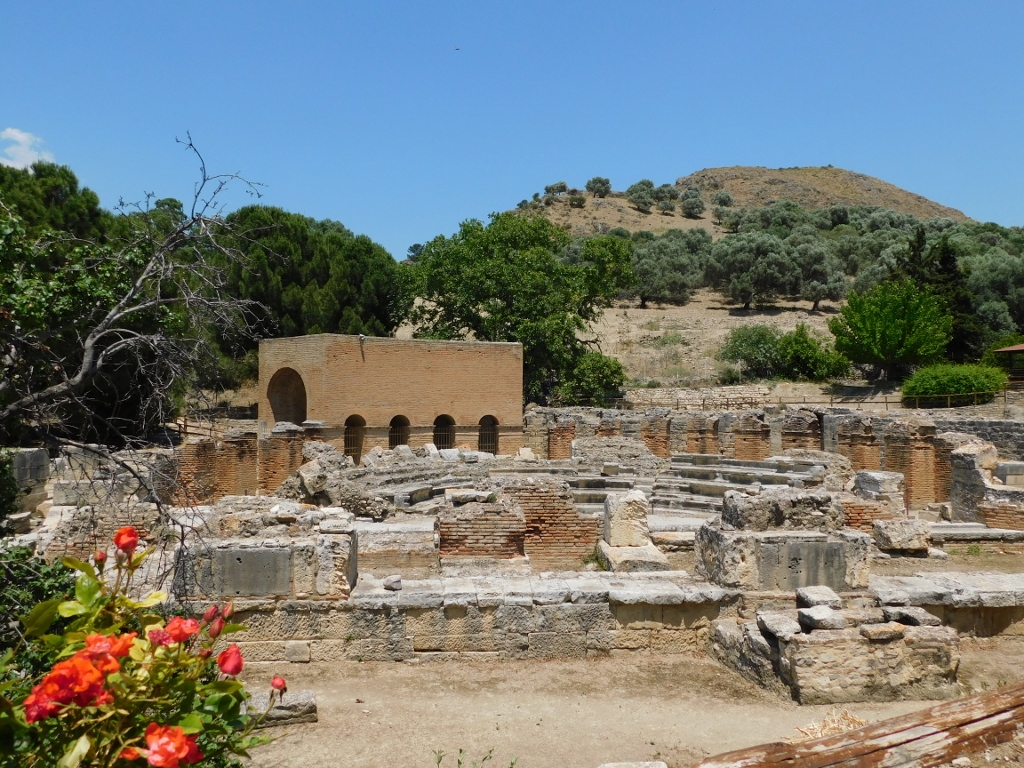 Gortyn’s Odeon
Gortyn’s Odeon
Here I have practically completed my visit to the site north of the main road and I wanted to go to the ruins south of the road which are, as I’ve mentioned, hidden by an olive grove. I asked some people I encountered in the vicinity, but none of them said convincingly where I was supposed to go and just gave me very general and vague guidelines. As there were no signs, I had to improvise a little.
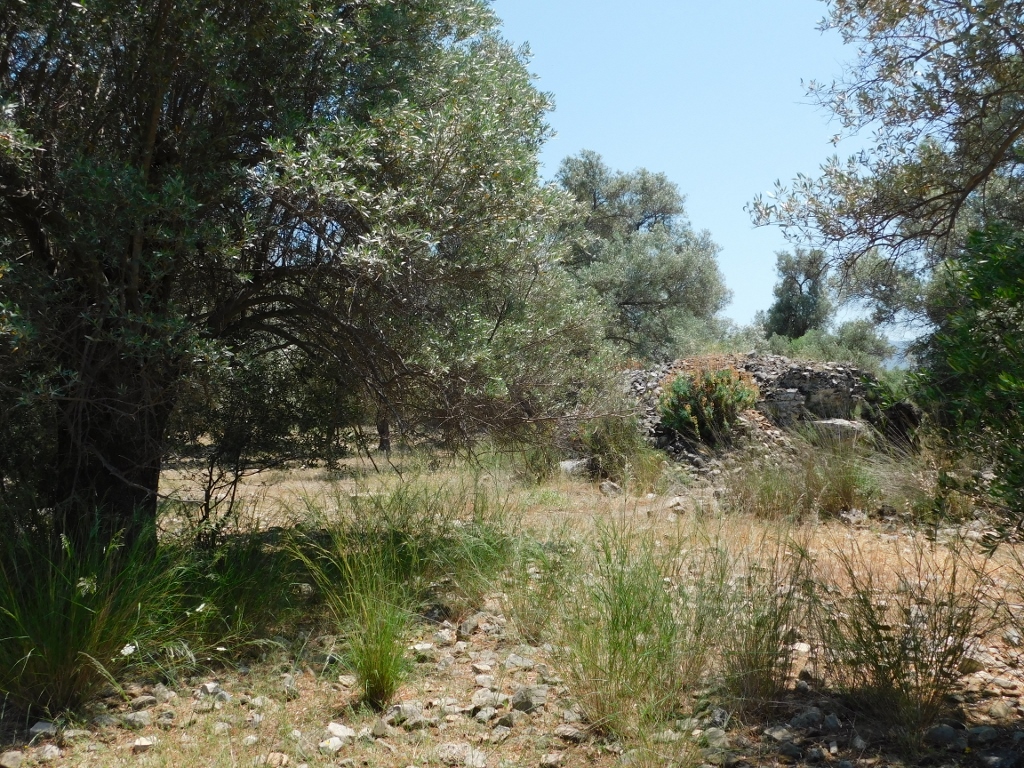 Olive grove and possible remains of old buildings south of the main road
Olive grove and possible remains of old buildings south of the main road
In this area it is possible to find remains of the Temple of Isis and Serapis, Temple of Apollo, as well as the Praetorium, and later I found on the maps that they are around 1 km away from the ticket office of the main section of the site. All in all, I just briefly ventured among the olives and not having a clue as to where I should go and what exactly I should look for, I just took a couple of photos and then returned to the car. I hope I did not miss out on anything spectacular.
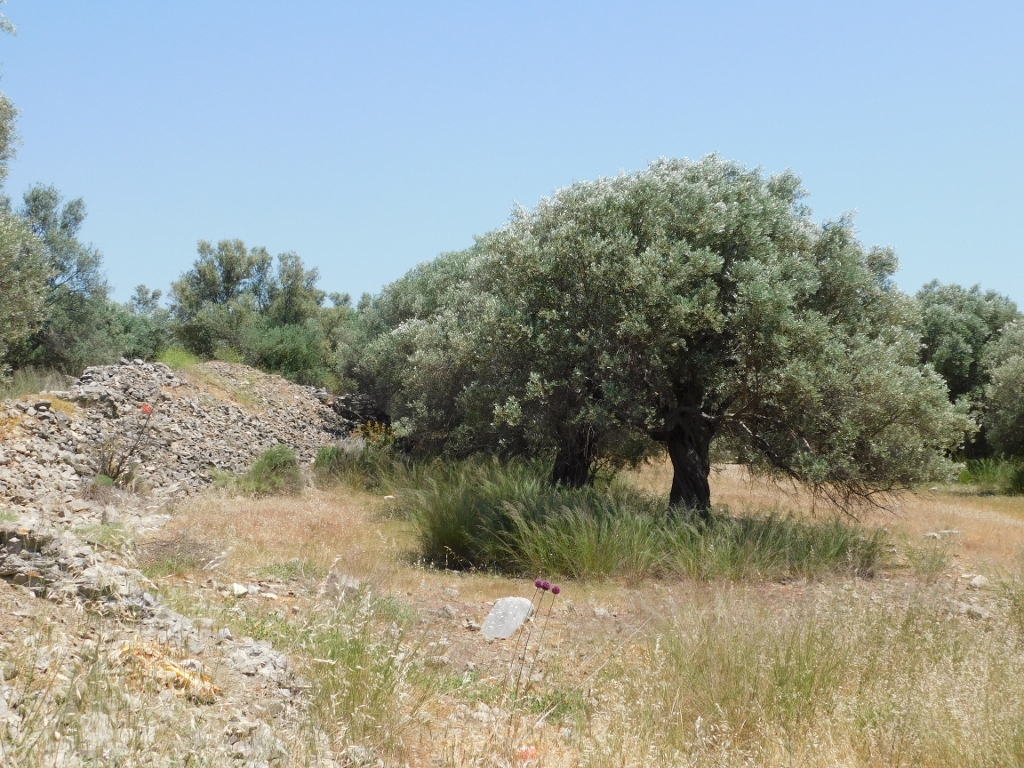 Olive grove and possible remains of old buildings south of the main road
Olive grove and possible remains of old buildings south of the main road
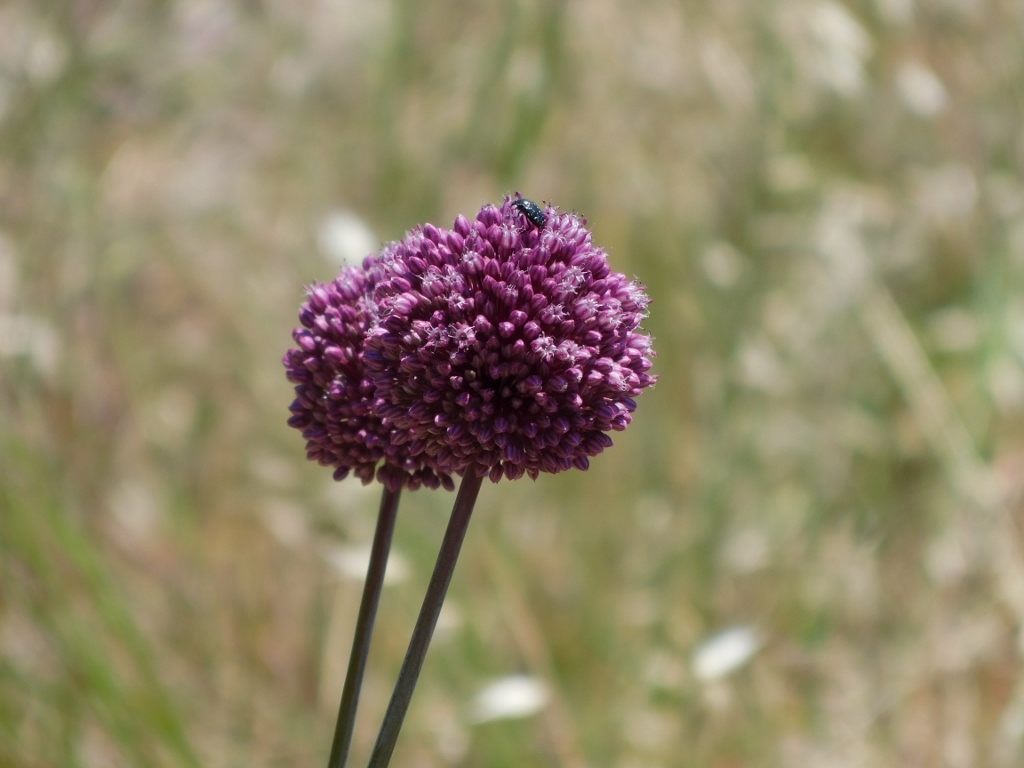 Life on Crete in May
Life on Crete in May
Less than 1.5 km further to the east, one comes to village Agioi Deka, which means “Holy Ten.” The village got this name as a reminder of ten Christian martyrs who perished here in 250 CE during the persecution by Roman Emperor Decius.
This Emperor Decius was very serious about persecuting and killing Christians, and I have already mentioned him when I wrote about the Cave of the Seven Sleepers in Jordan (https://www.svudapodji.com/en/jordan-9/).
To start with, this village on Crete is very picturesque:
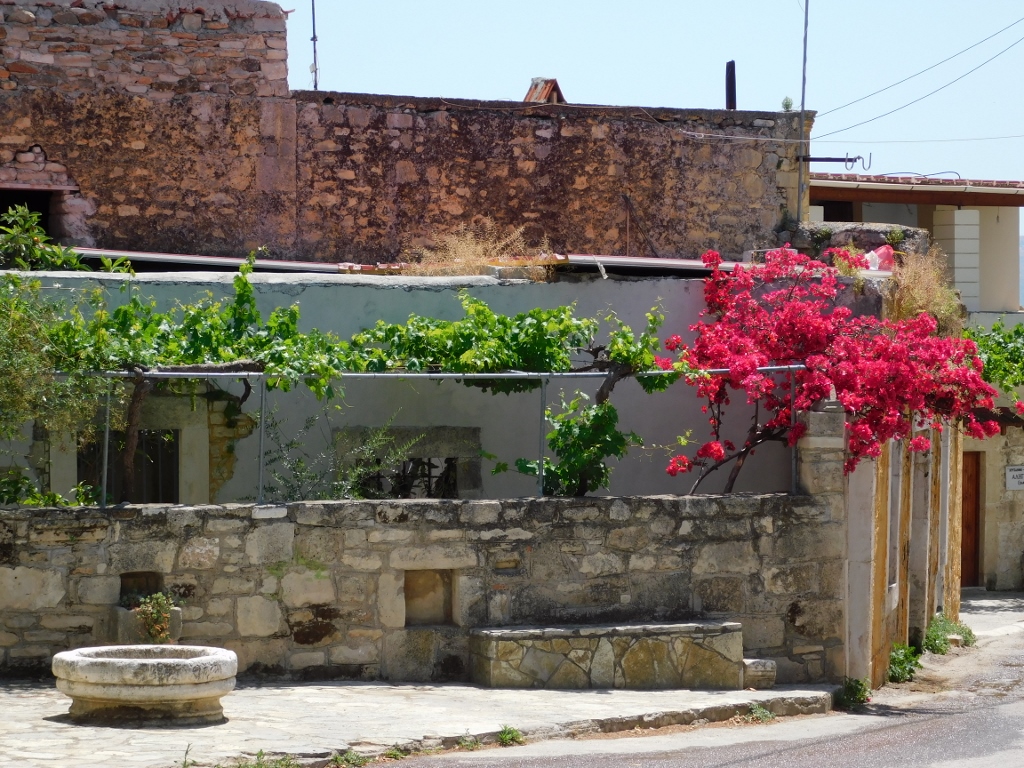 Agioi Deka, a detail
Agioi Deka, a detail
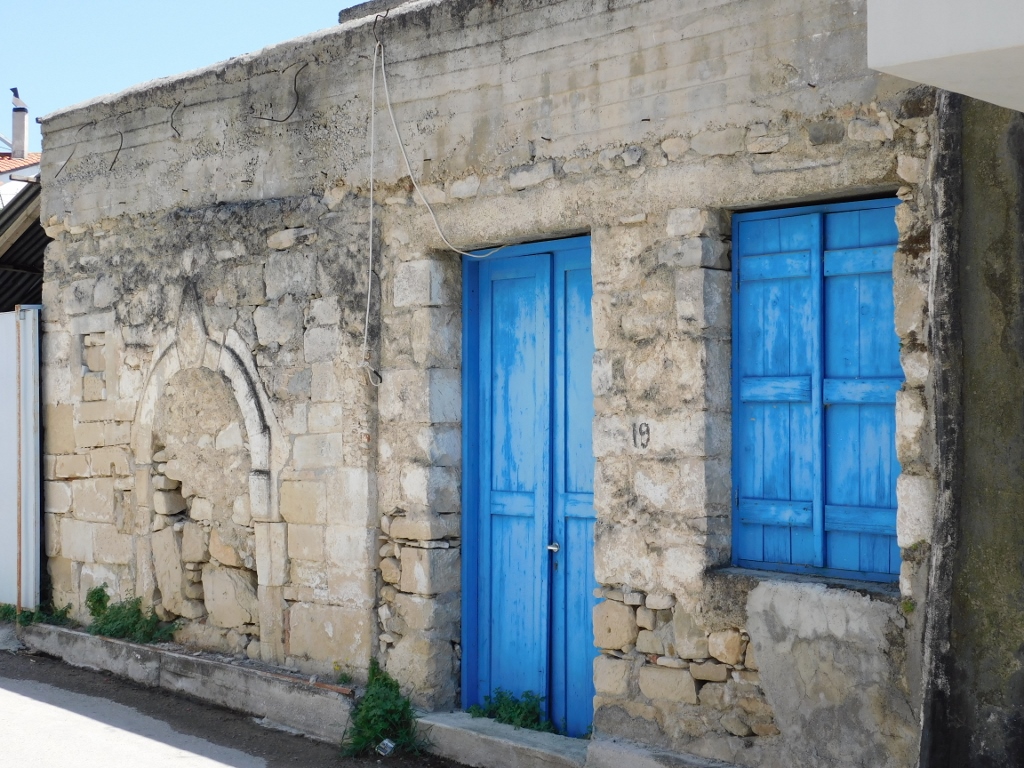 Agioi Deka, a detail
Agioi Deka, a detail
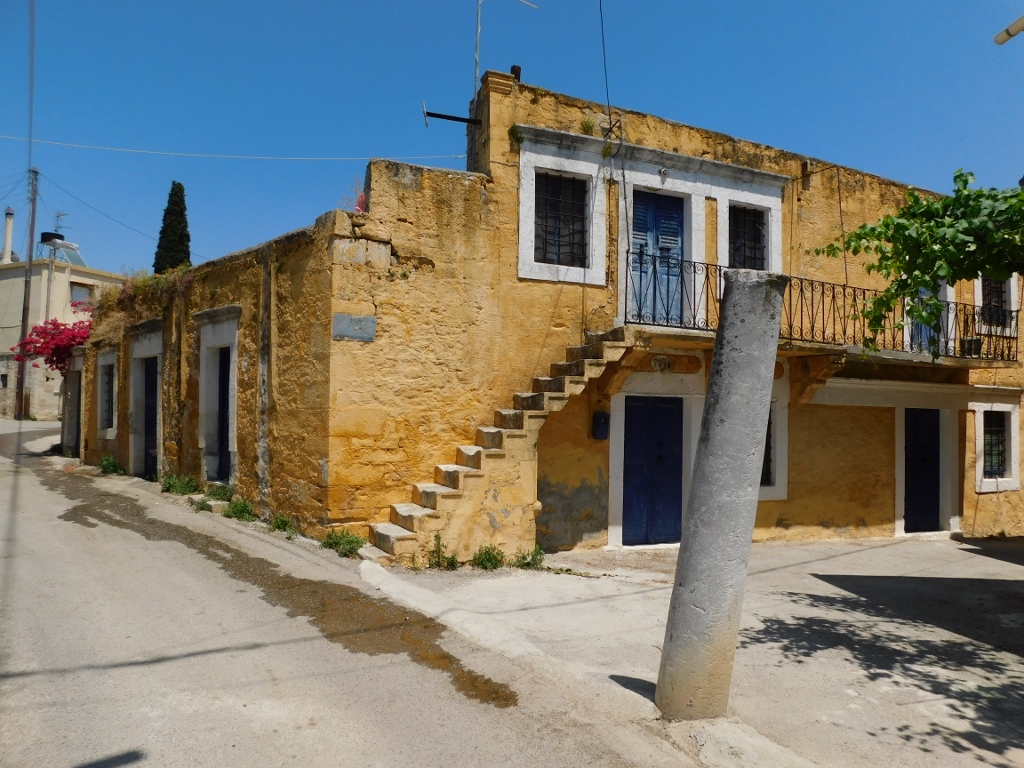 Agioi Deka, a detail
Agioi Deka, a detail
First I walked to a chapel built above the tomb of the ten holy martyrs, which is located at the perimeter of the village.
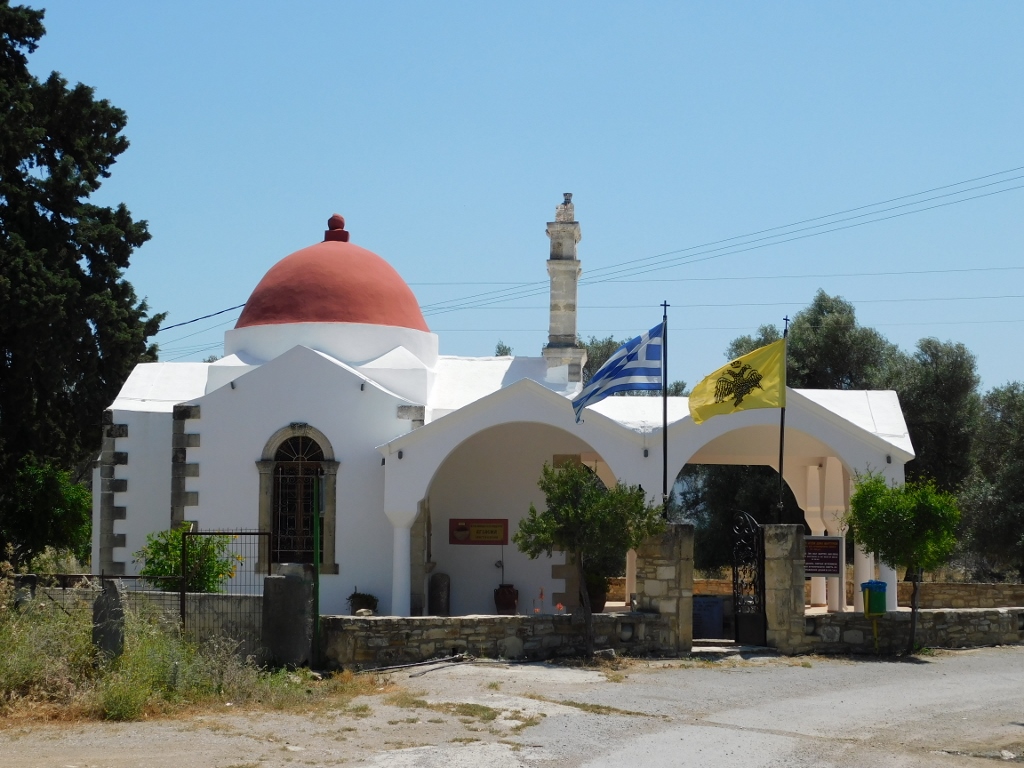 Chapel above the tomb of the ten martyrs, side view
Chapel above the tomb of the ten martyrs, side view
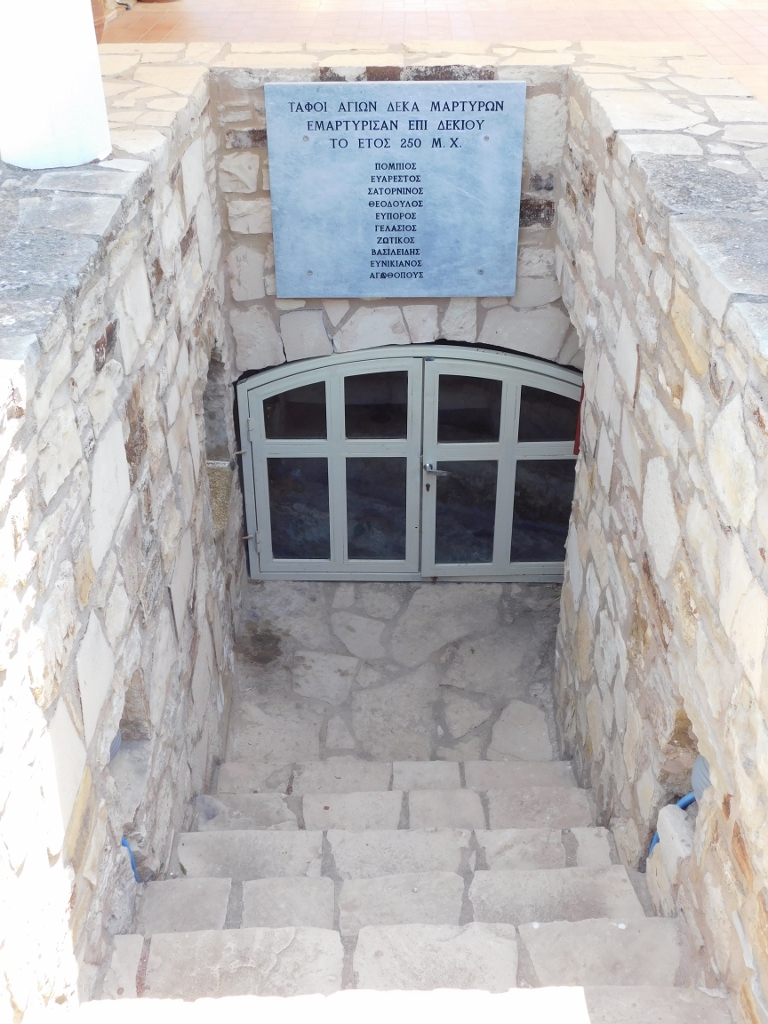 Agioi Deka, Tomb of the ten holy martyrs
Agioi Deka, Tomb of the ten holy martyrs
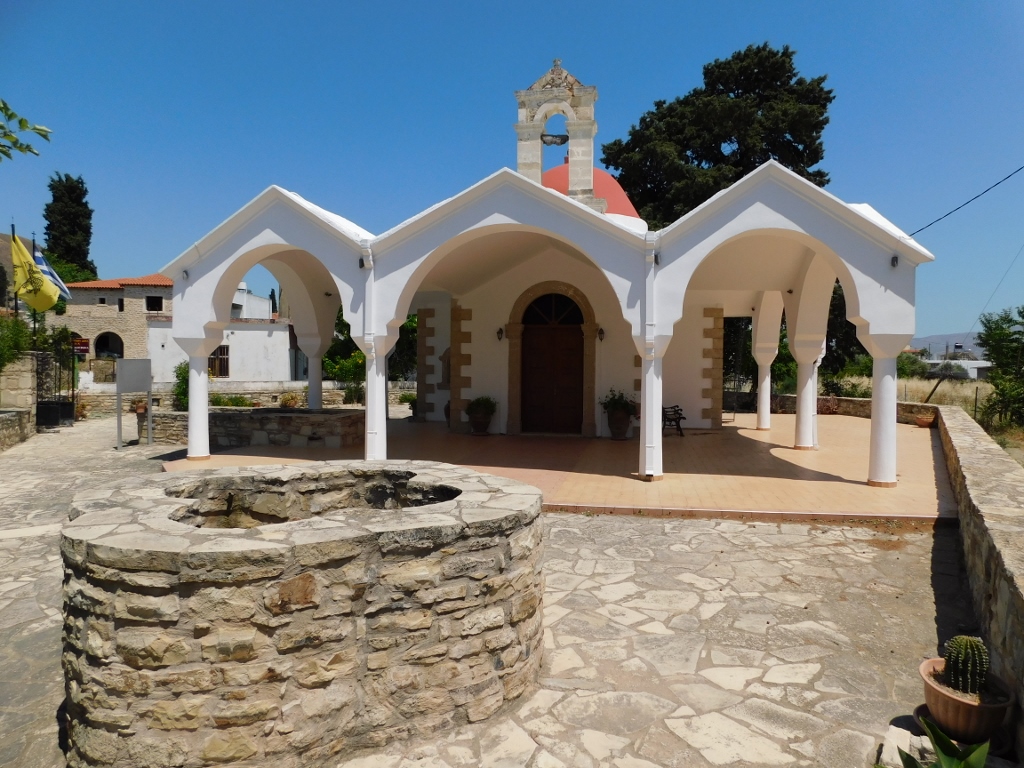 Chapel above the tomb of the ten martyrs, front view
Chapel above the tomb of the ten martyrs, front view
By the way, if somebody is interested in those remains of Gortyn south of the main road, it needs to be said that from this chapel to the Praetorium there are only 6-7 minutes on foot. I did not know this at the time of my visit to the village and thus I did not go there, instead of which I returned to the centre of the village where there is a church from the 12th century built above the remains of an antique amphitheatre. It was right in this amphitheatre that, following a major torture, these ten early Christians had their heads cut off. There are frescoes from the 13th and the 14th century in the church, but I could not enter as it was closed. The exterior parts of the church date back to the 19th century.
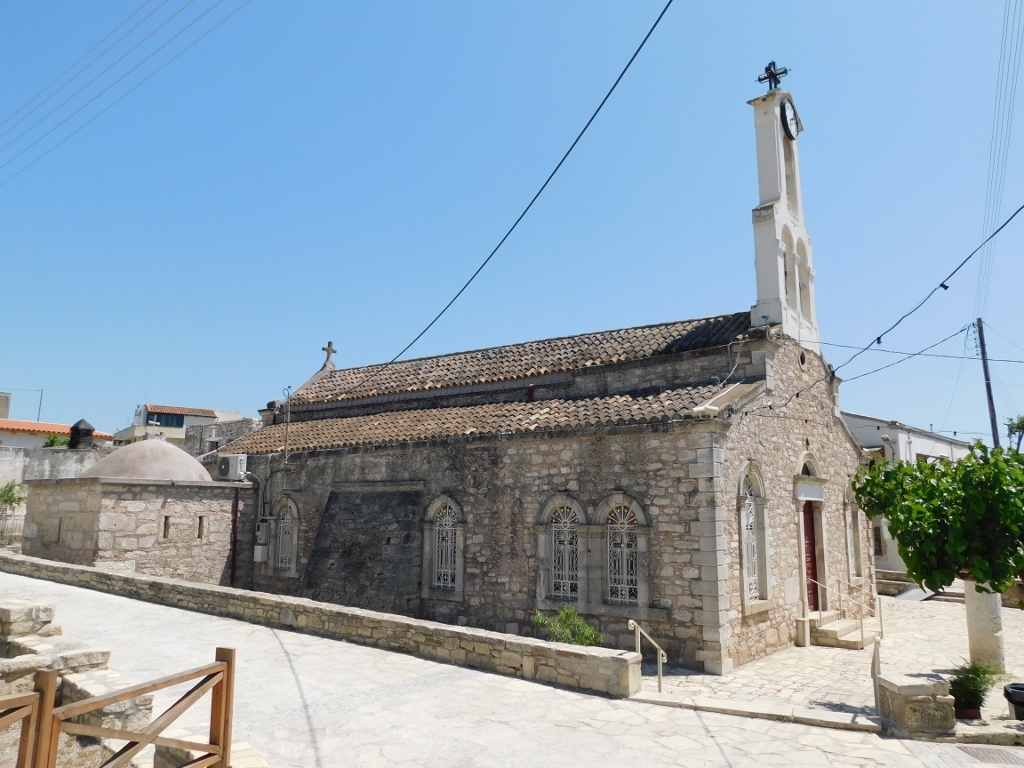 Agioi Deka, the Church of Ten Saints
Agioi Deka, the Church of Ten Saints
In the direct proximity to the church there is also a small archaeological museum with exhibits discovered in the area.
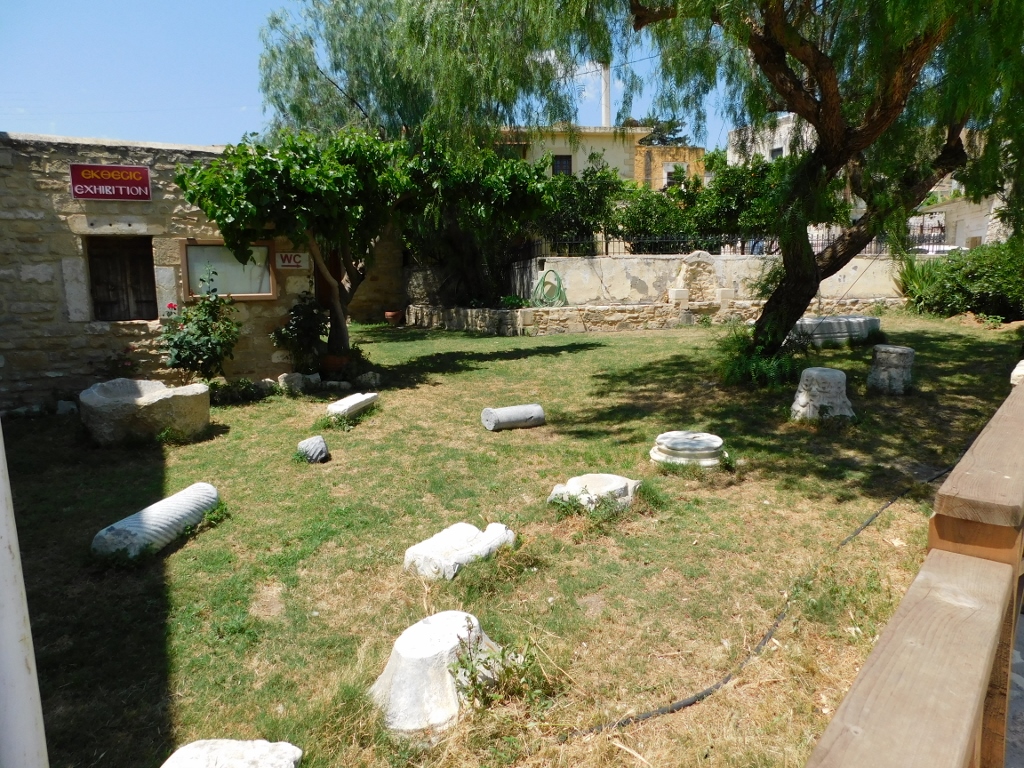 Agioi Deka, the local archaeological museum
Agioi Deka, the local archaeological museum
While I was walking around village Agioi Deka, I practically did not encounter any human being, for it was early afternoon and the people were either at home having lunch, or they were at work, or they were having a rest as it was warm although it was only May. But, there were some other inhabitants of the village and its surroundings:
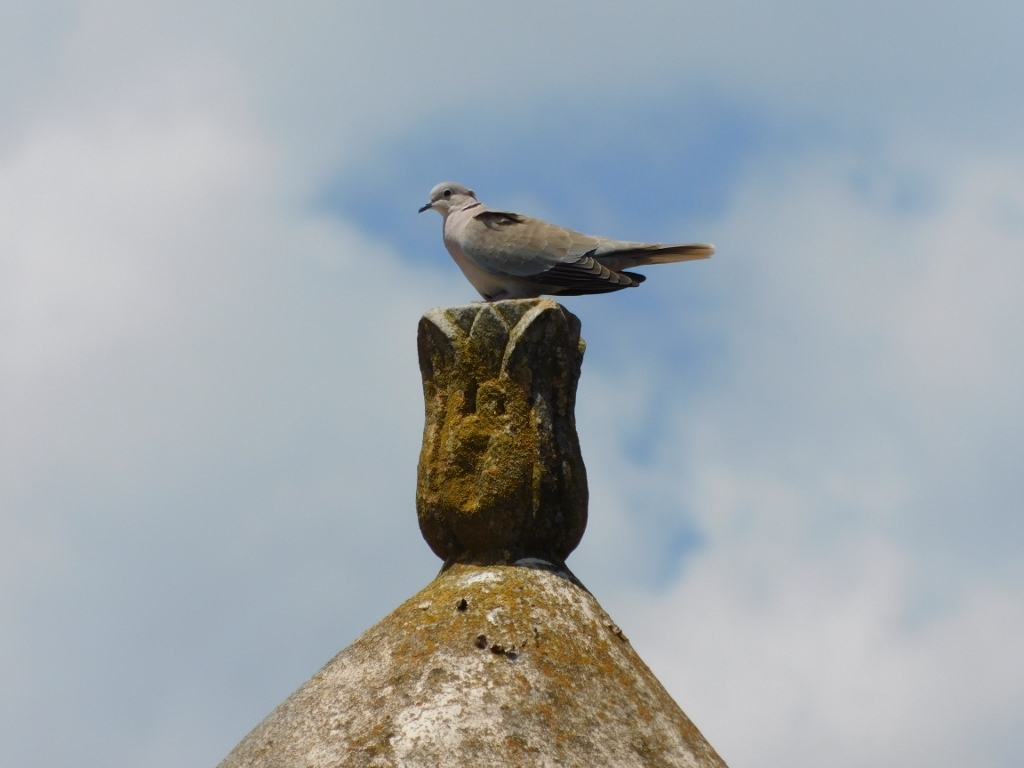 Eurasian collared dove (Streptopelia decaocto)
Eurasian collared dove (Streptopelia decaocto)
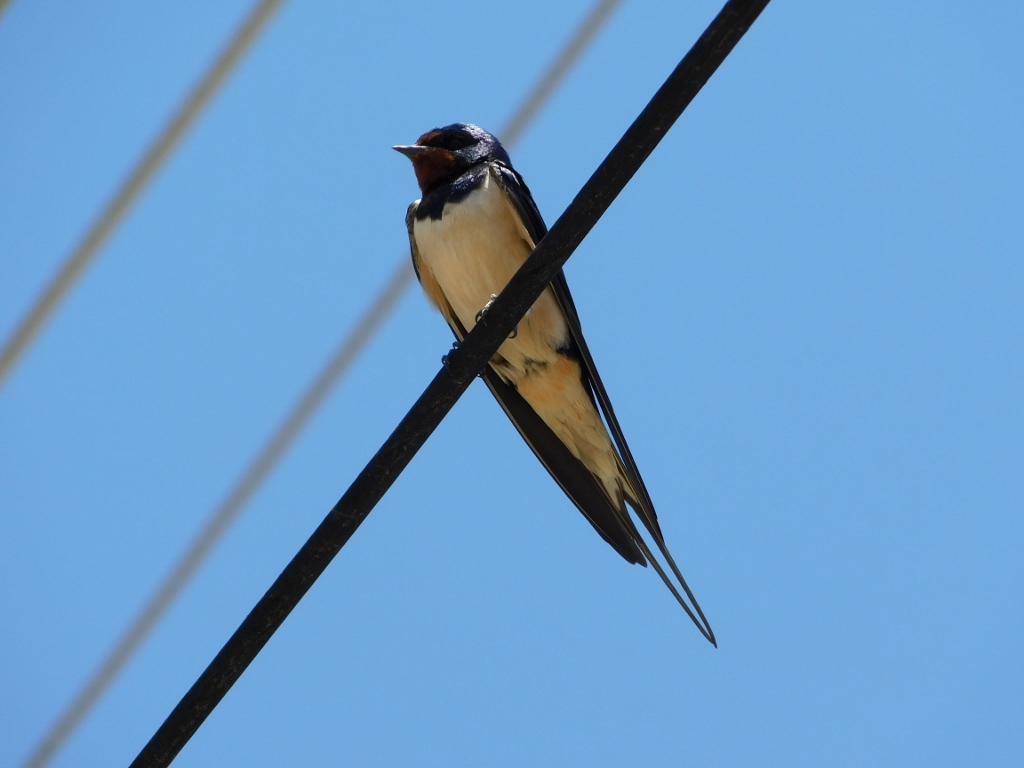 Barn swallow (Hirundo rustica)
Barn swallow (Hirundo rustica)
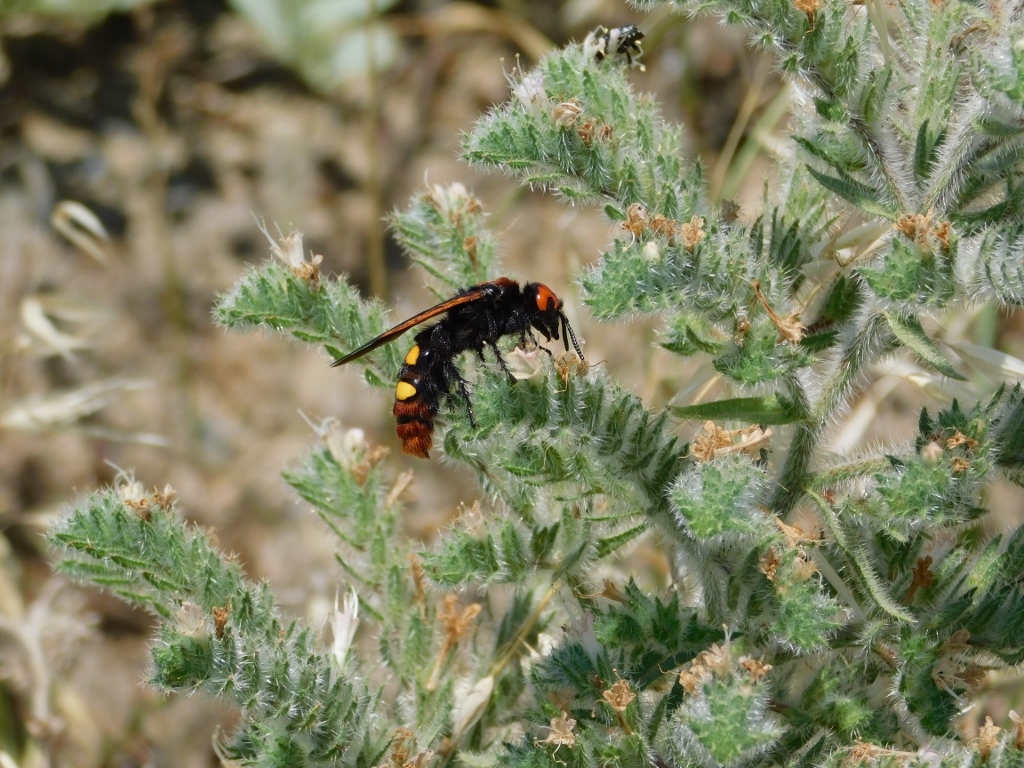 Mammoth wasp (Megascolia maculata)
Mammoth wasp (Megascolia maculata)
Now I got back into the car and continued driving eastwards. Like in the streets of village Agioi Deka, there was almost nobody else on the road, so from time to time I could safely stop in the very lane and take a photo or two. I was keen on doing this for the quantity of olive trees I saw here was incredible and I was truly impressed.
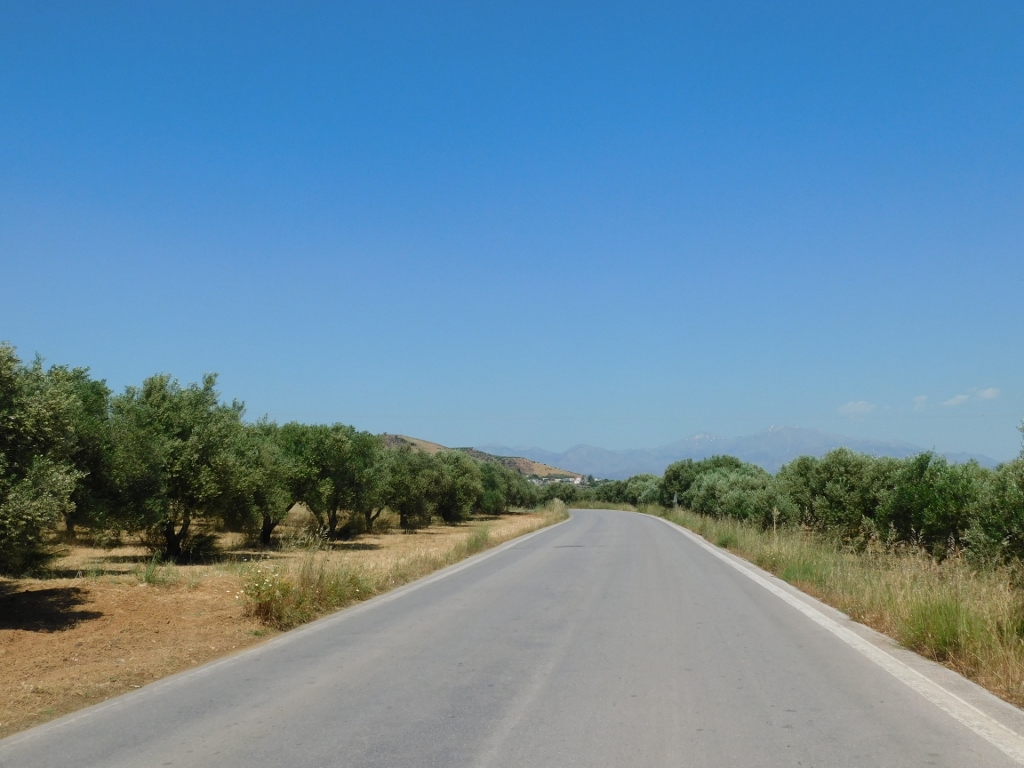 Olive groves in the Messara Plain
Olive groves in the Messara Plain
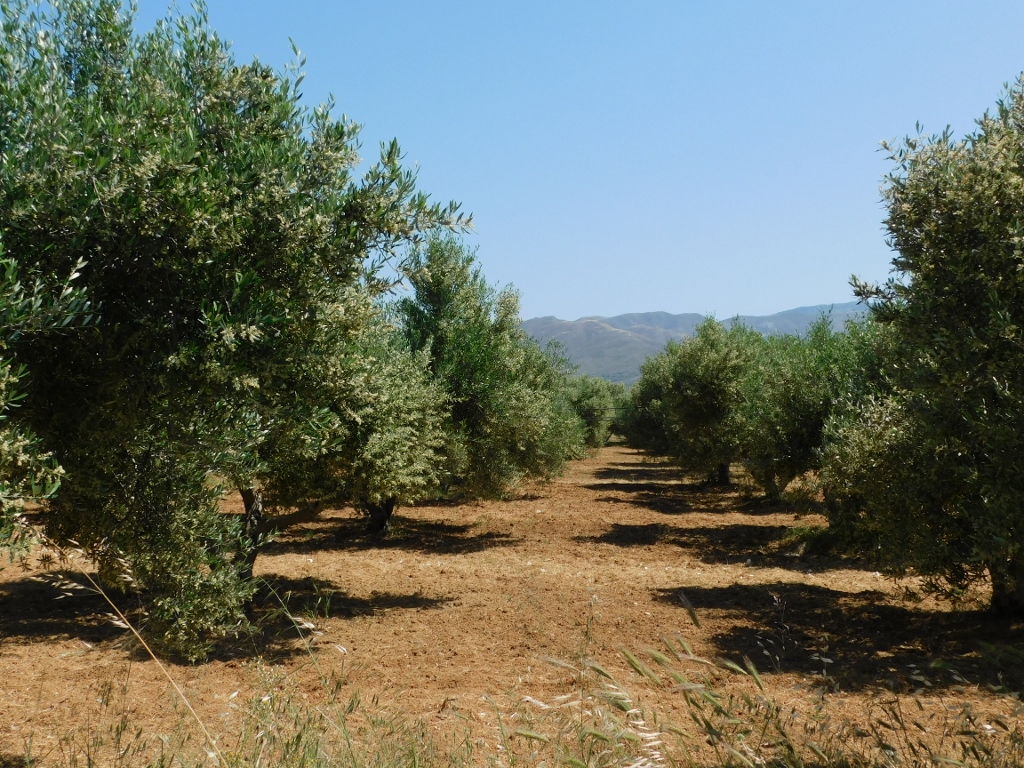 Olive groves in the Messara Plain
Olive groves in the Messara Plain
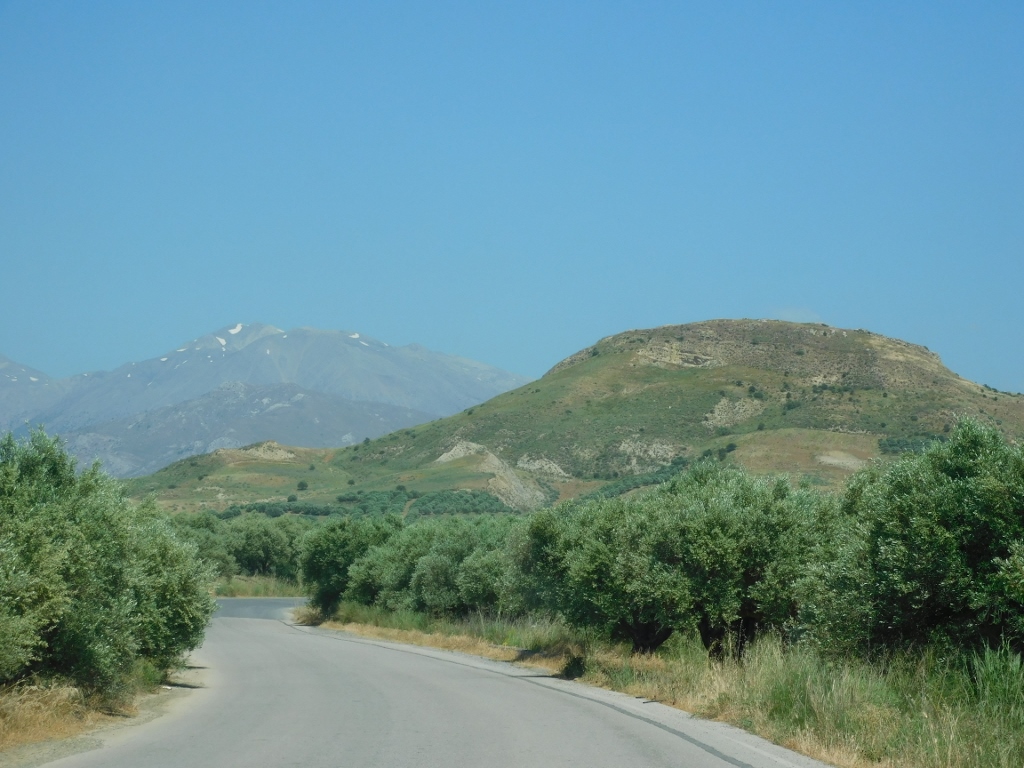 Olive groves in the Messara Plain
Olive groves in the Messara Plain
Even when I left the Messara Plain and started to go slightly up, while still in the general area of south Crete, the landscapes were absolutely magnificent.
 South Crete
South Crete
 South Crete
South Crete
 South Crete
South Crete
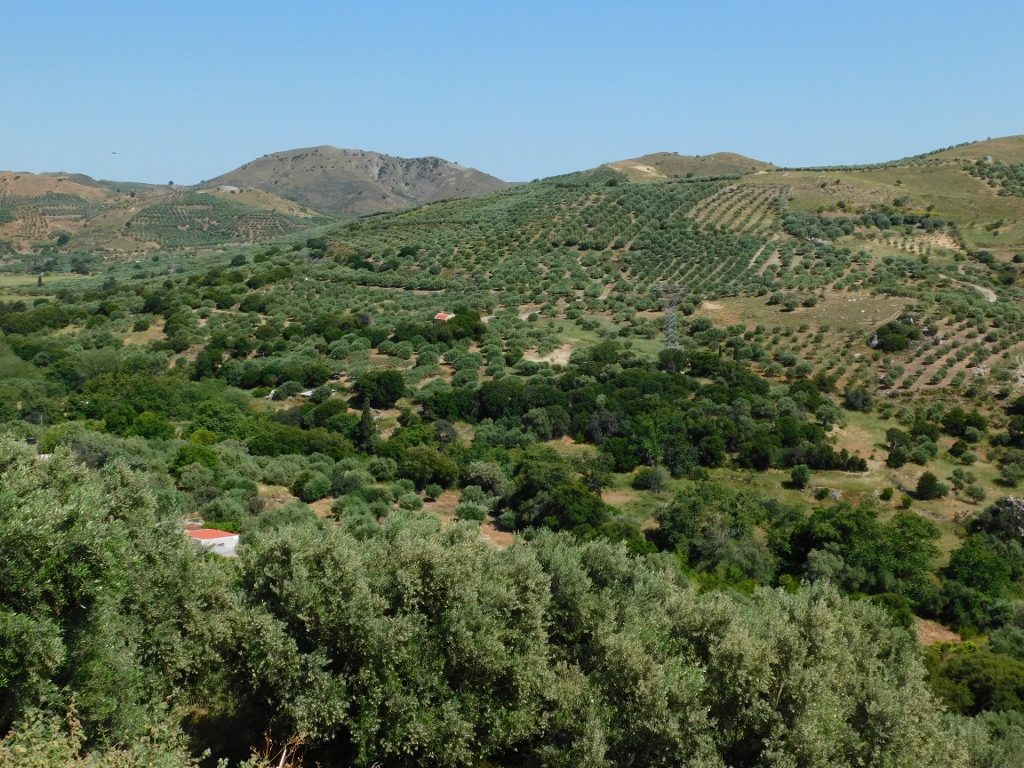 South Crete
South Crete
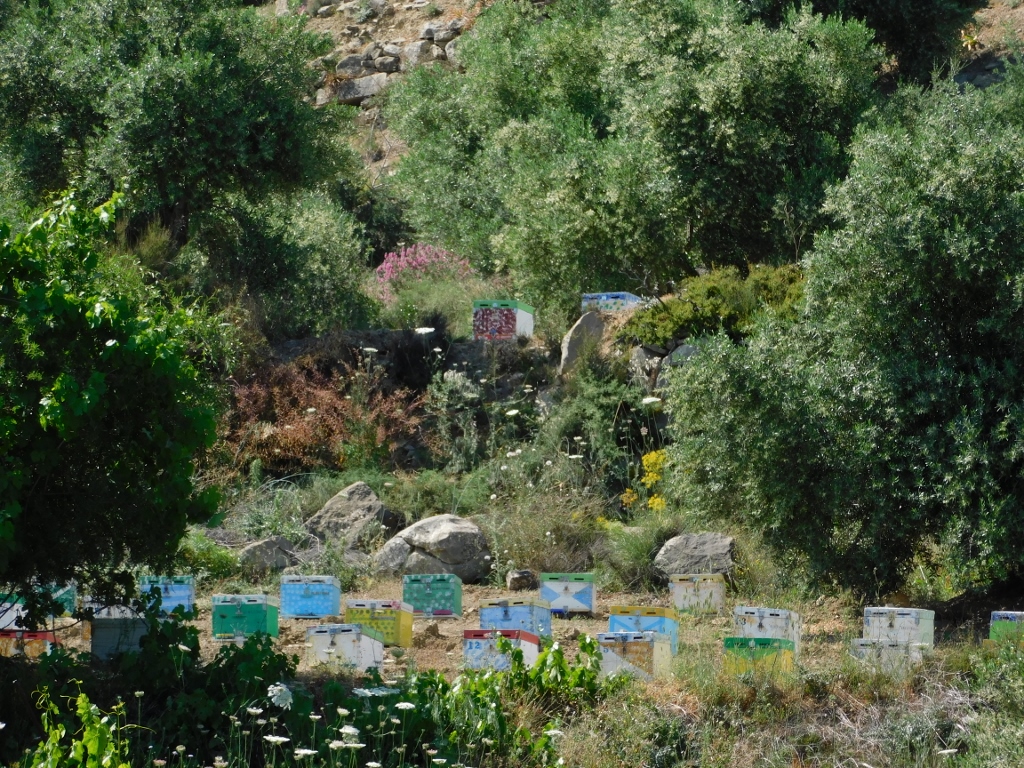 South Crete
South Crete
After a little over an hour of drive I approached my next destination and that was a small town that is mostly called just Viannos, while its full name is Ano Viannos, meaning Upper Viannos. This is important for I previously drove past village Kato Viannos, meaning Lower Viannos. And, of course, Kato Viannos is situated at a lower altitude than Ano Viannos which is some 3.5 km away. This thing with the words “ano” and “kato” turned out to be quite useful for my orientation the next day, but in quite a different place.
And as for the situation here, first I got off the main road and then I drove to the centre and parked the car there. Then I immediately sat down to have a coffee while still in the main street. On the one hand, I did want to refresh a little and, on the other, I wanted to put the owners of the café in front of which I parked the car in a good mood. I did not even need to bother, for they were exceptionally kind and forthcoming, and did not care in the least where I had parked the car.
This particular spot turned out to be quite good also because on the other side of the street there was one of the town’s landmarks and that is a huge old plane tree which in the middle has a large hollow – sufficiently big for me to sit there briefly and have a photo of me taken.
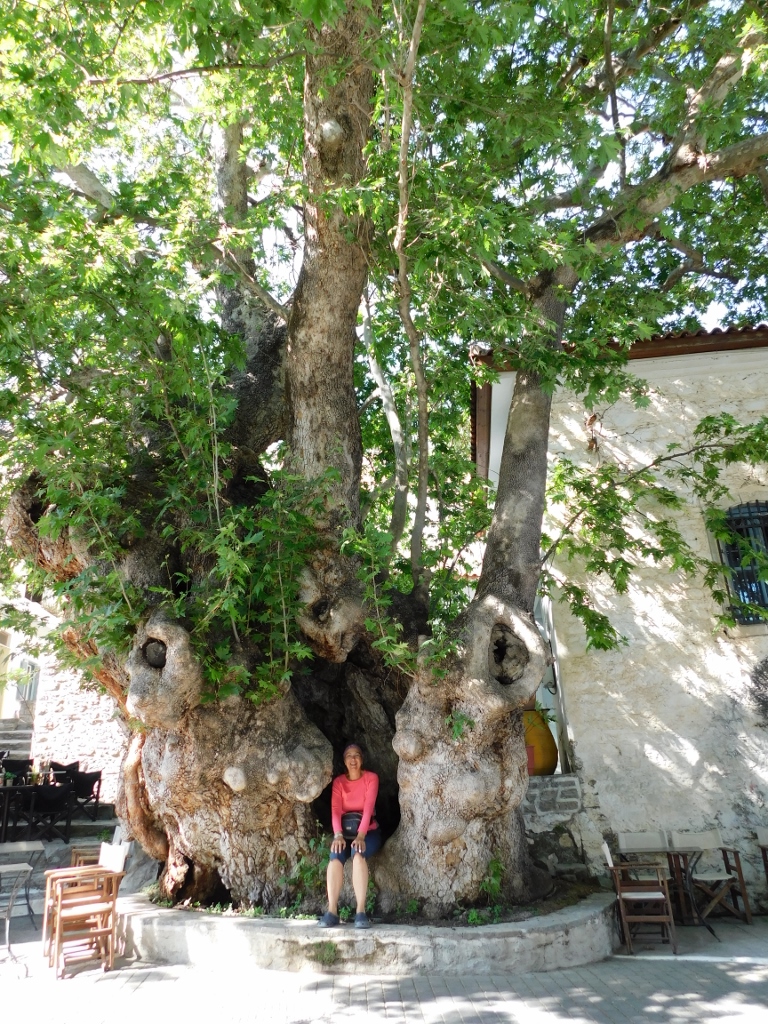 Old plane tree in Ano Viannos
Old plane tree in Ano Viannos
After this I started with my sightseeing that involved going uphill. Namely, Viannos is a historic place and in addition to having connection with mythological events, there is evidence that there used to be a city-state here already in the 2nd century BCE. Over time, the place was ruled not only by Romans, but also by Byzantines, Venetians, as well as Ottomans. During WWII and the Nazi occupation, as retaliation for the activities of the Cretan Resistance, the Germans killed a very large number of people here in 1943. However, what I wanted to see here were two churches from the 14th century and in order to visit them one needs to go uphill.
The beginning was flat, but soon enough this changed.
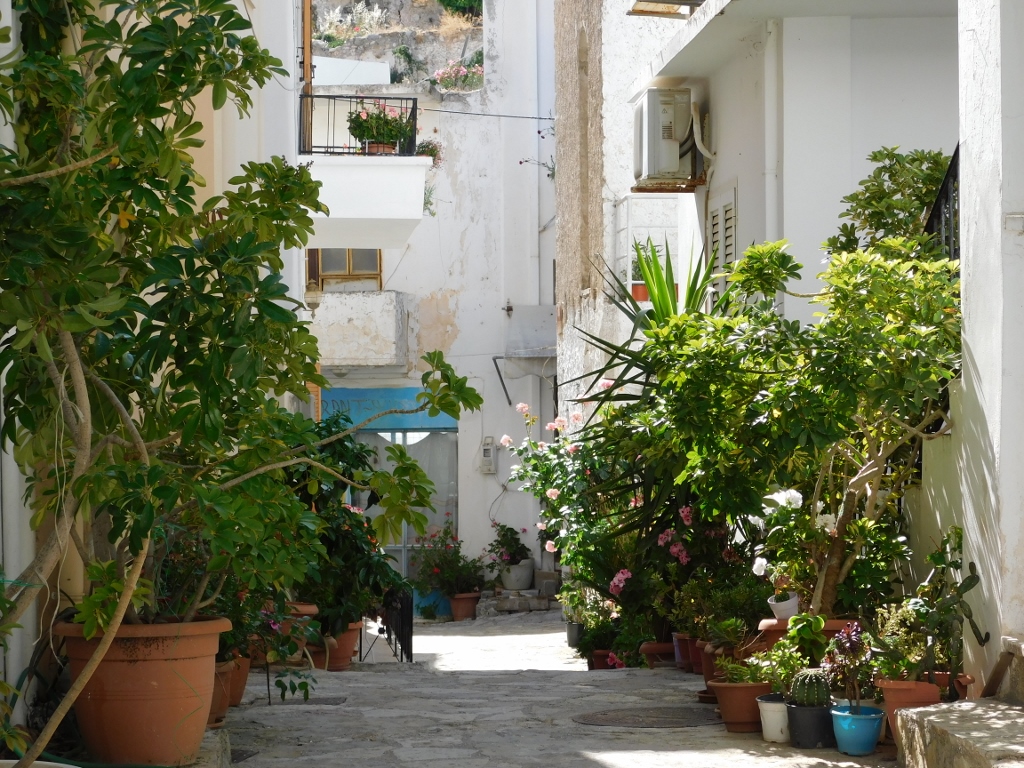 Ano Viannos, a detail
Ano Viannos, a detail
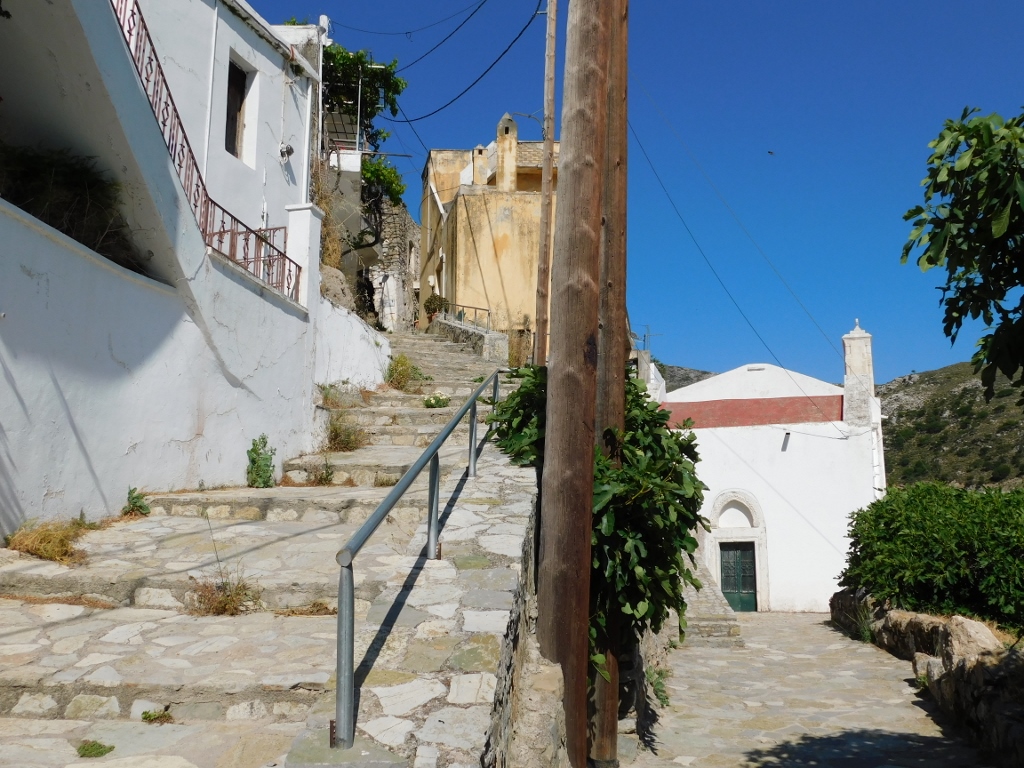 Ano Viannos, a detail
Ano Viannos, a detail
Going up along narrow, lovely and picturesque streets, I passed close to the Church of St. George, but I decided to deal with it on my way back, so I just continued towards the Church of St. Pelagia.
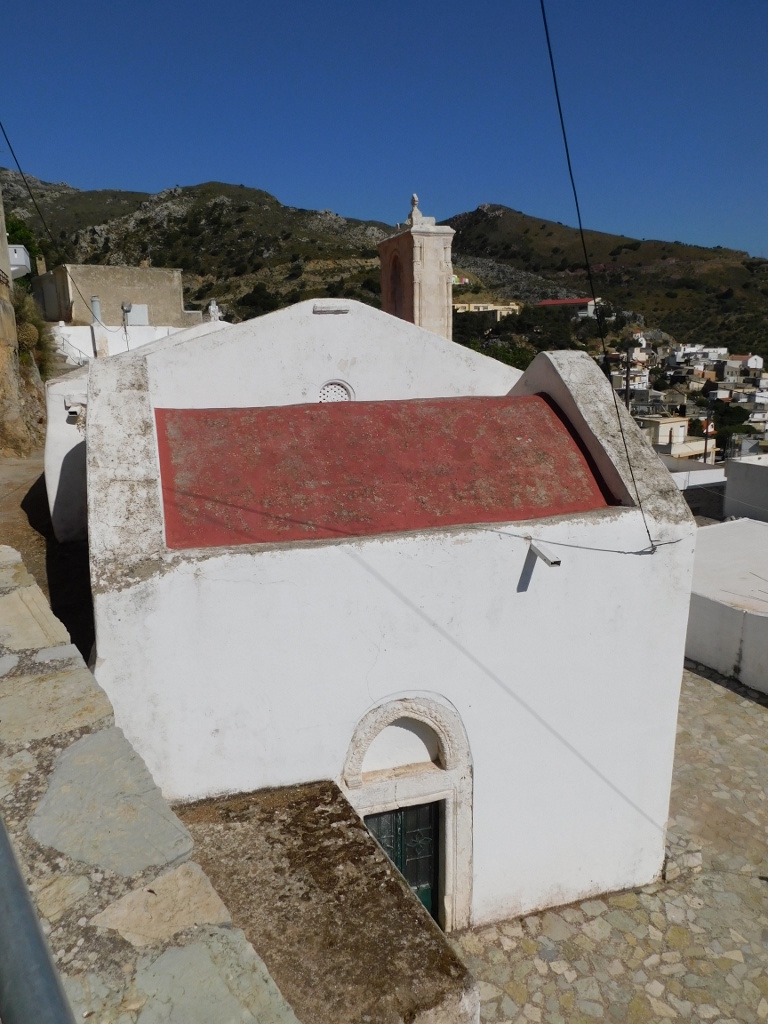 Ano Viannos, Church of St. George
Ano Viannos, Church of St. George
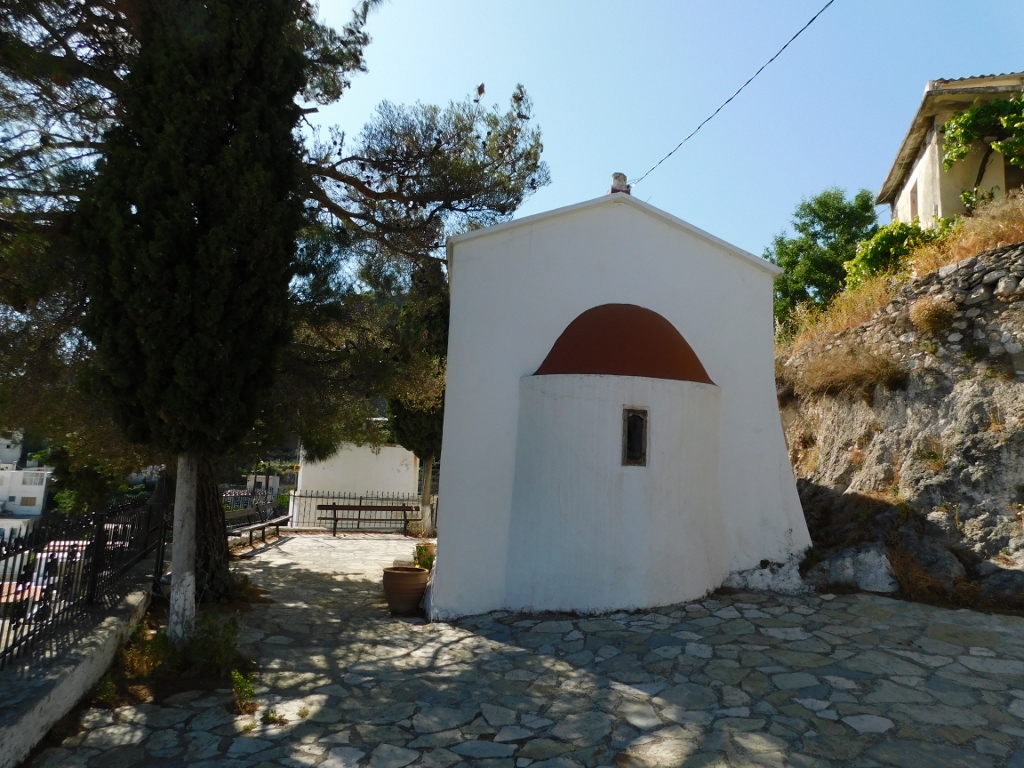 Ano Viannos, Church of St. Pelagia
Ano Viannos, Church of St. Pelagia
 Ano Viannos, Church of St. Pelagia
Ano Viannos, Church of St. Pelagia
The Church of St. Pelagia dates back, as I’ve said, to the 14th century and some very nice frescoes from 1360 can be seen inside.
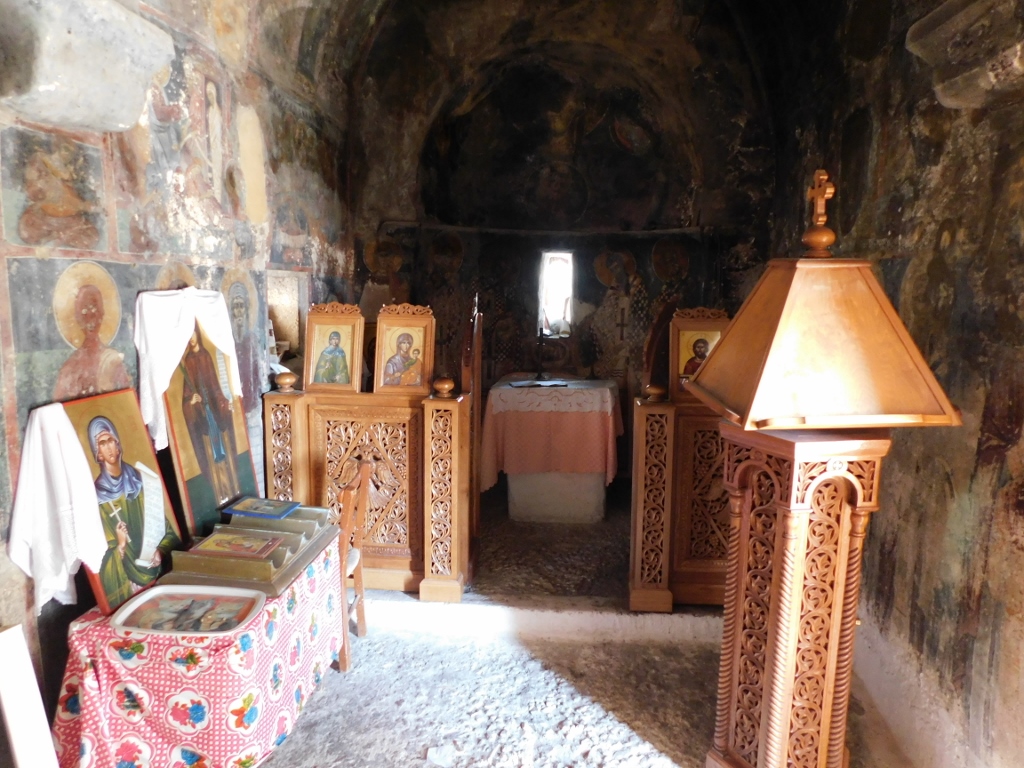 Ano Viannos, Church of St. Pelagia
Ano Viannos, Church of St. Pelagia
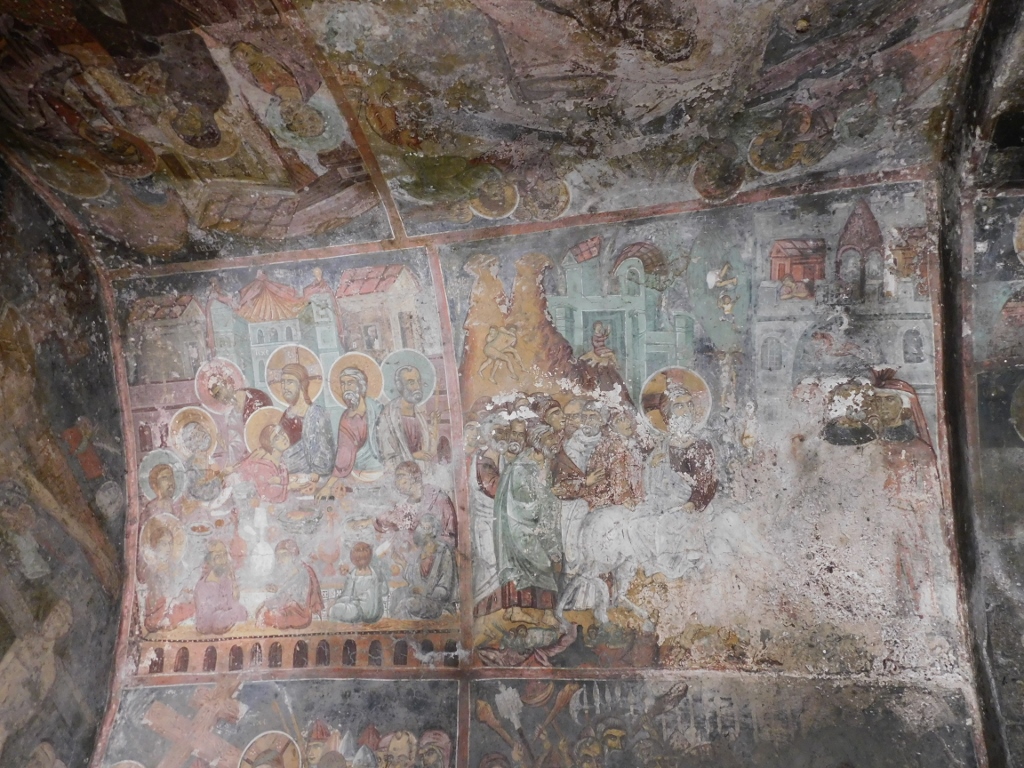 Ano Viannos, Church of St. Pelagia
Ano Viannos, Church of St. Pelagia
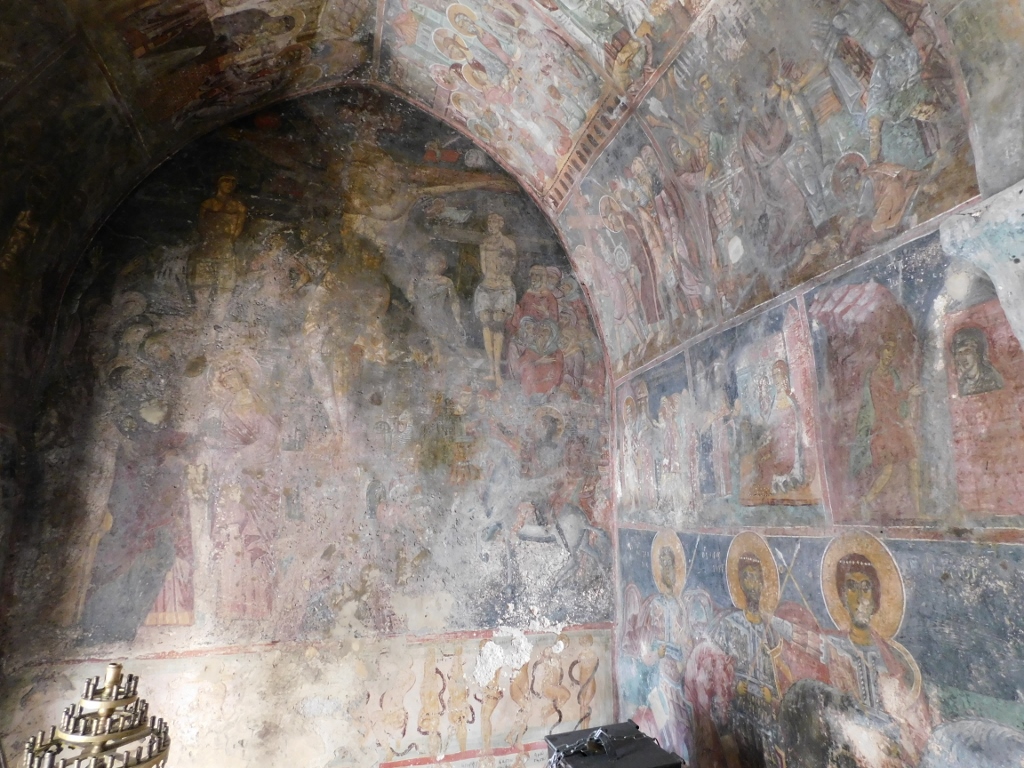 Ano Viannos, Church of St. Pelagia
Ano Viannos, Church of St. Pelagia
One should definitely come here not only because of the church and its unquestionably beautiful frescoes, but also because there is an exceptionally fine view at the town and its surroundings from a plateau beside the church.
 View at Ano Viannos
View at Ano Viannos
In the photo above, one can clearly discern a large Church of Archangel Michael in the centre of the town. It needs to be said that within the town there are as many as six churches, including the two I visited.
While looking at the surroundings from the height of the plateau beside the Church of St. Pelagia, I was again impressed by the large number of olive trees growing around the town of Ano Viannos, while in the following photo it is possible to see just a part of them, as well as a winding road that climbs up towards the south only to proceed again in the eastbound direction right after the turn. This was precisely where I intended to continue with my drive.
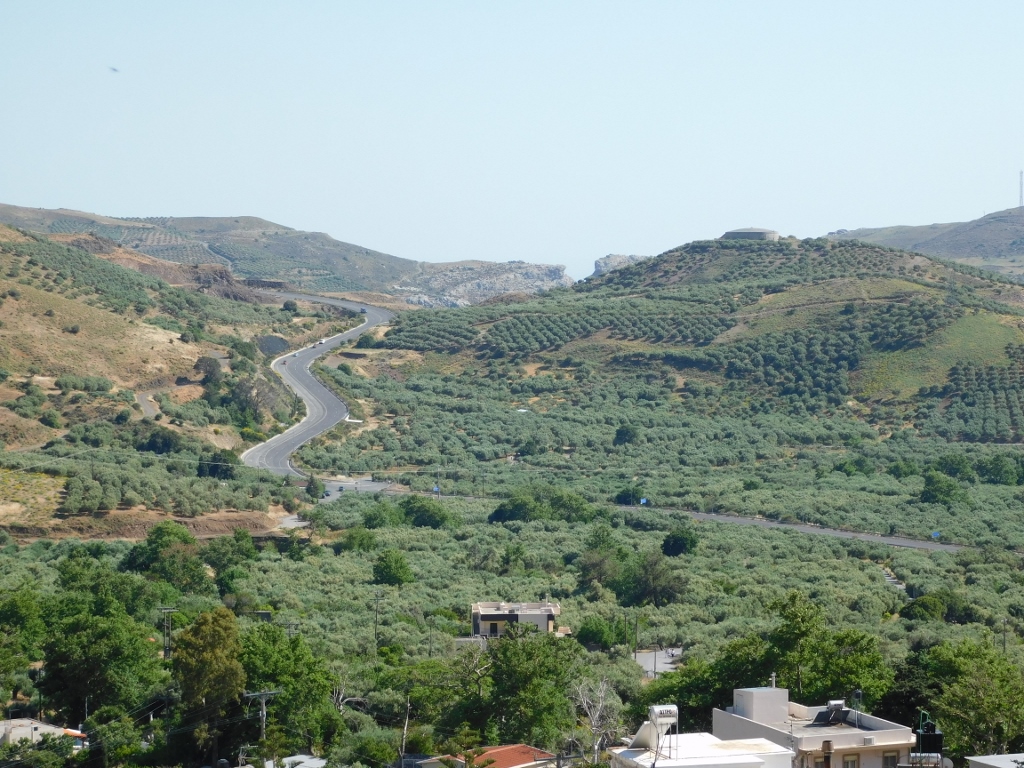 Surroundings of Ano Viannos, a detail
Surroundings of Ano Viannos, a detail
Next to the church I also noticed a very interesting tree, but, unfortunately, I know little about trees and have no idea what this tree really was. Still, its blossoms and fruits were very picturesque.
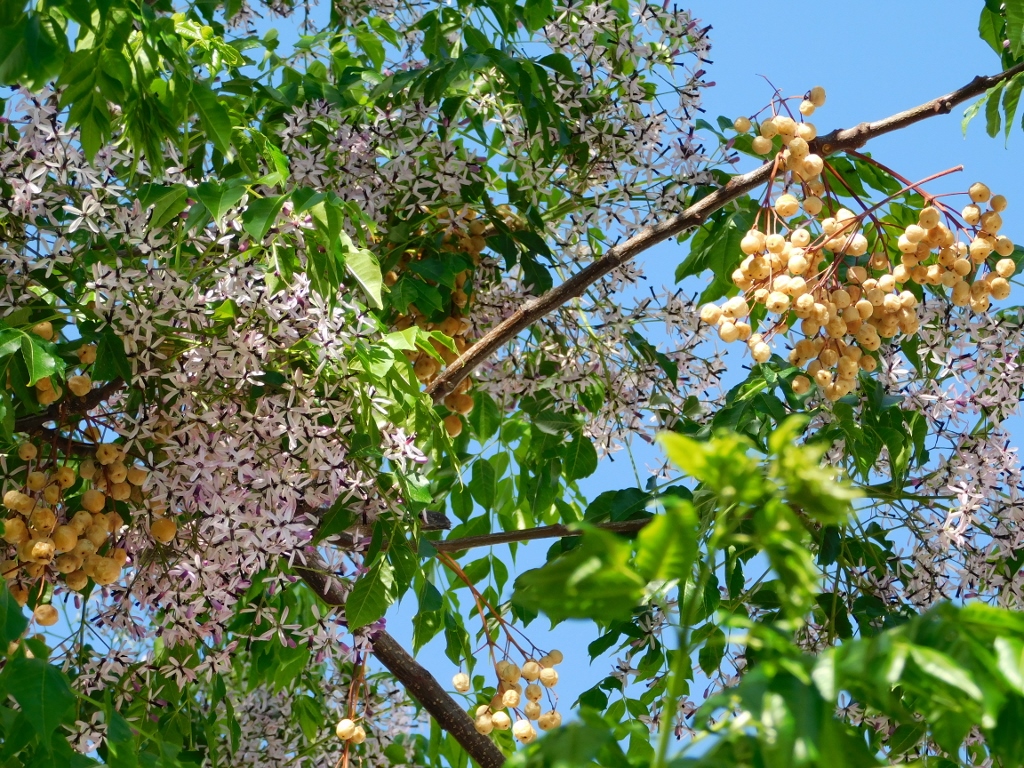 Ano Viannos, a detail
Ano Viannos, a detail
Now I started to descend, but following another route. The narrow streets were still pretty and picturesque, and soon enough I reached the Church of St. George, but this time around from the other side.
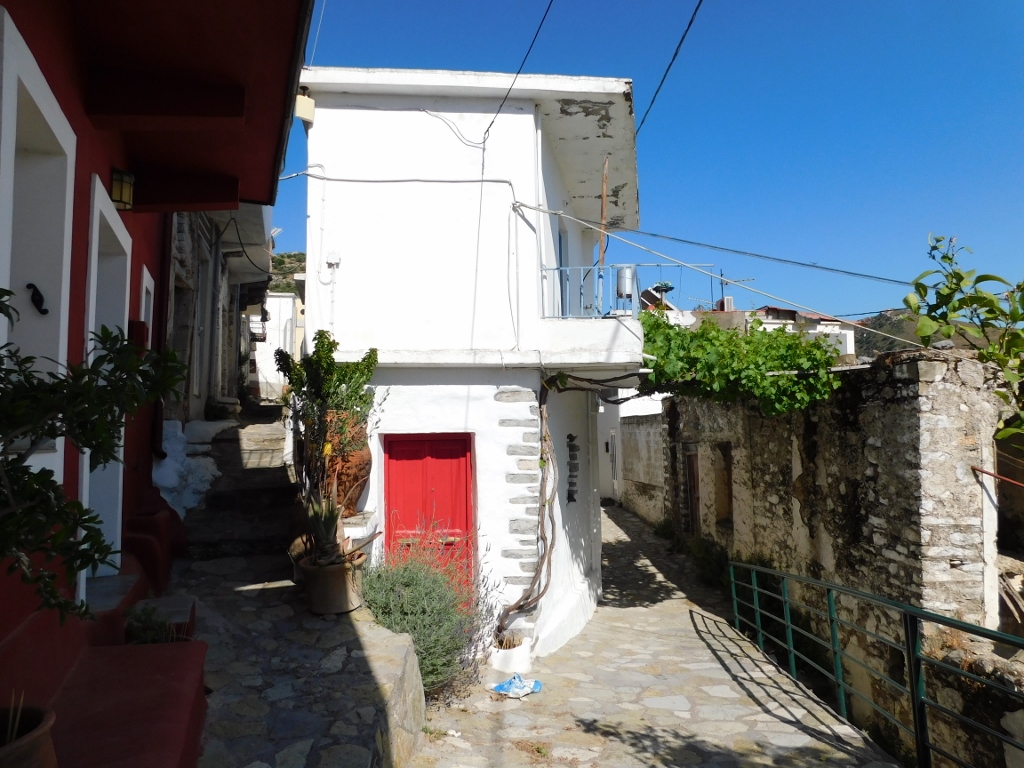 Ano Viannos, a detail
Ano Viannos, a detail
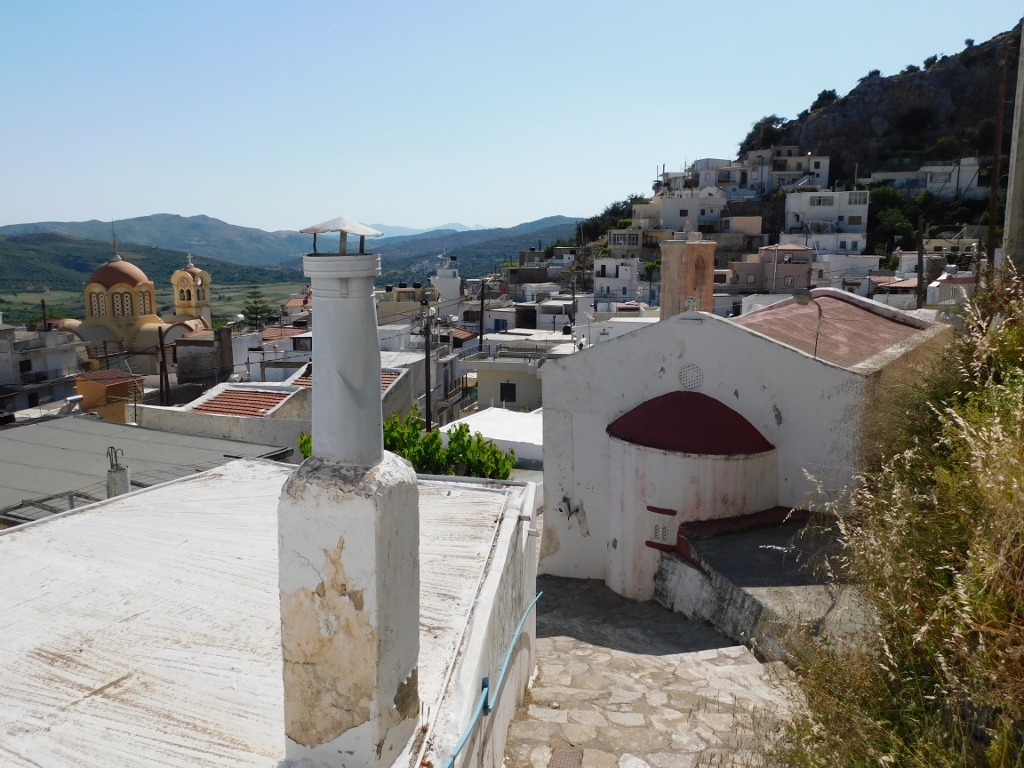 Ano Viannos, Church of St. George
Ano Viannos, Church of St. George
According to what I have managed to dig out, this Church of St. George is also from the 14th century, but maybe it is not. The problem in the sporadic information comes from the fact that a couple of kilometres to the south there is yet another Church of St. George built in 1401 in which it is also possible to see frescoes.
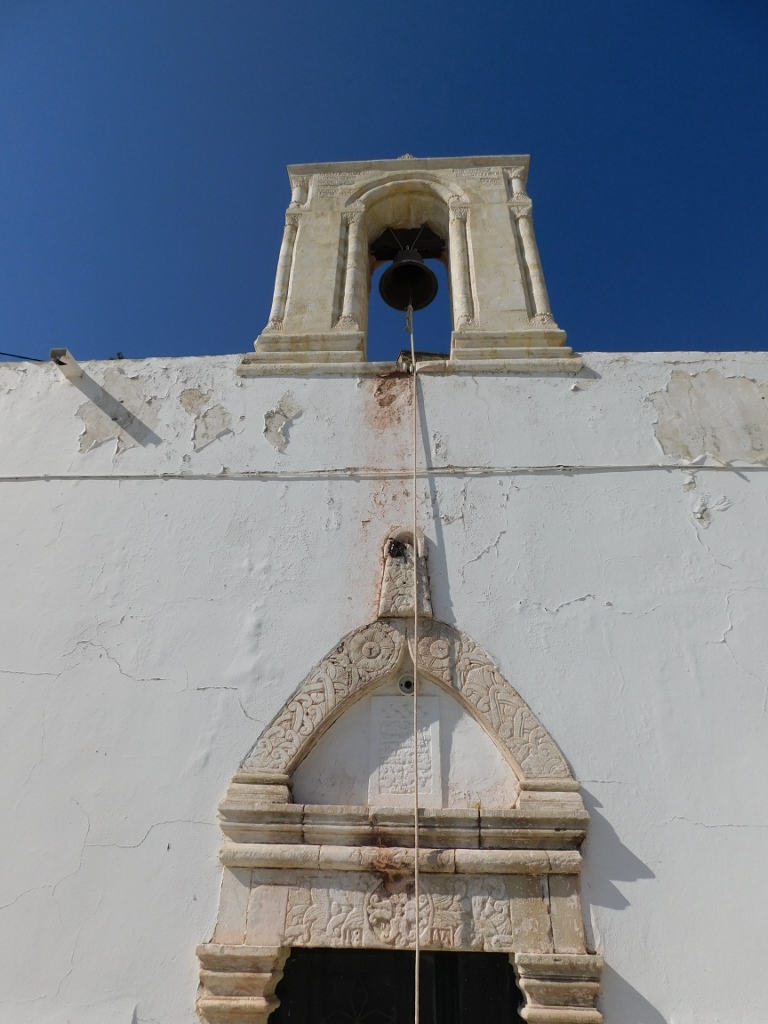 Ano Viannos, Church of St. George, a detail
Ano Viannos, Church of St. George, a detail
I could not enter here for it was closed, but the church was certainly lovely also when seen only from the outside.
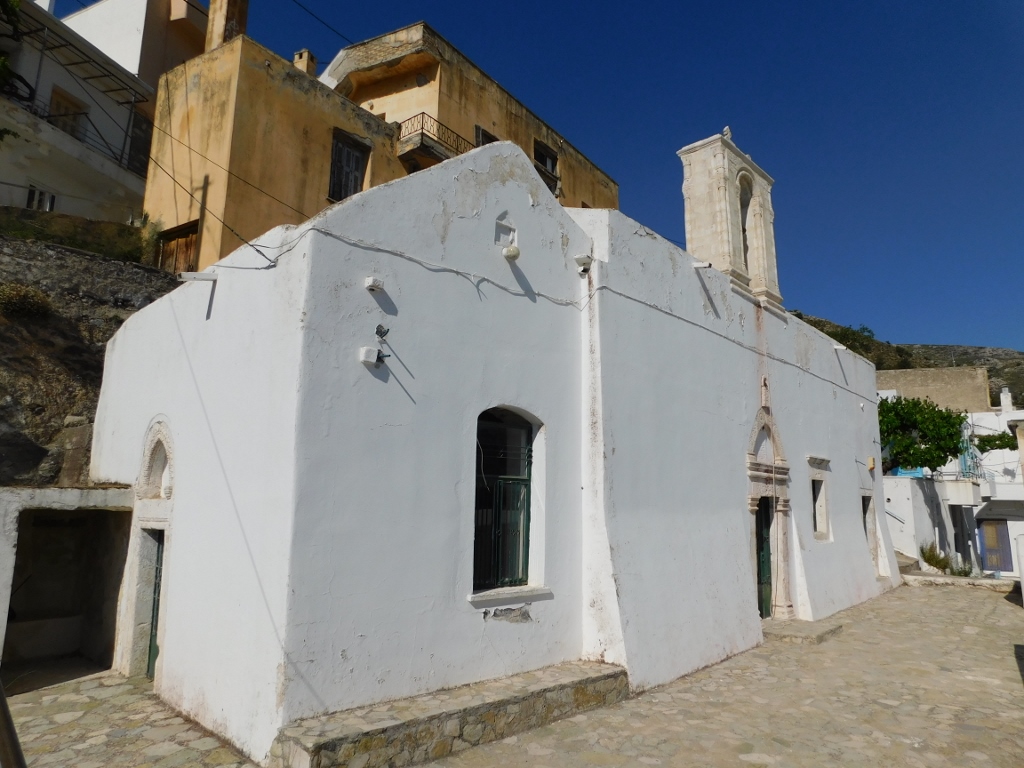 Ano Viannos, Church of St. George
Ano Viannos, Church of St. George
Now I returned to the square with the plane tree where my car was parked and there, before continuing with my journey, I noted a restored watermill, as well as an old drinking fountain, while right next to the watermill there is also the Folklore Museum.
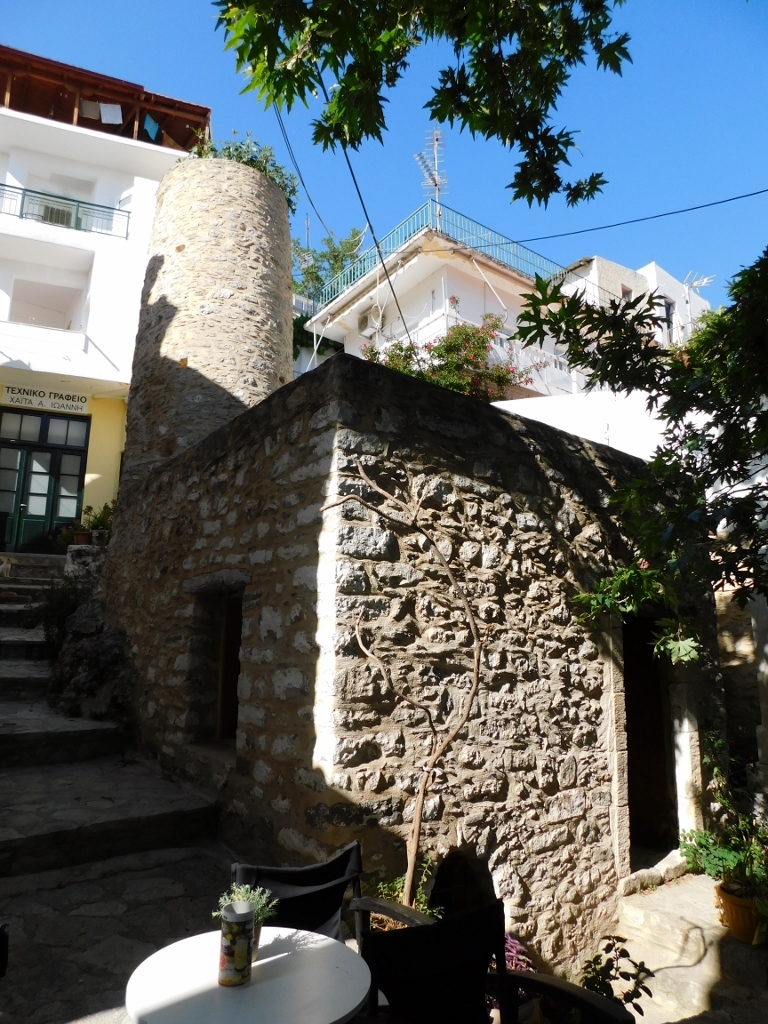 Ano Viannos, old watermill
Ano Viannos, old watermill
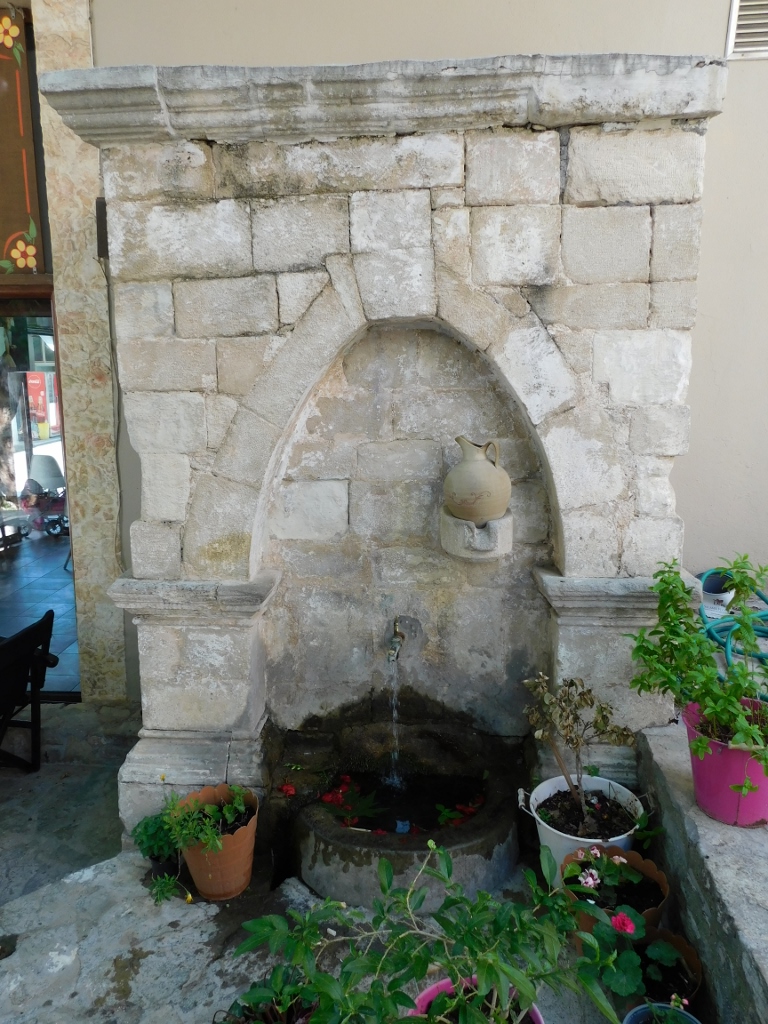 Ano Viannos, old drinking fountain
Ano Viannos, old drinking fountain